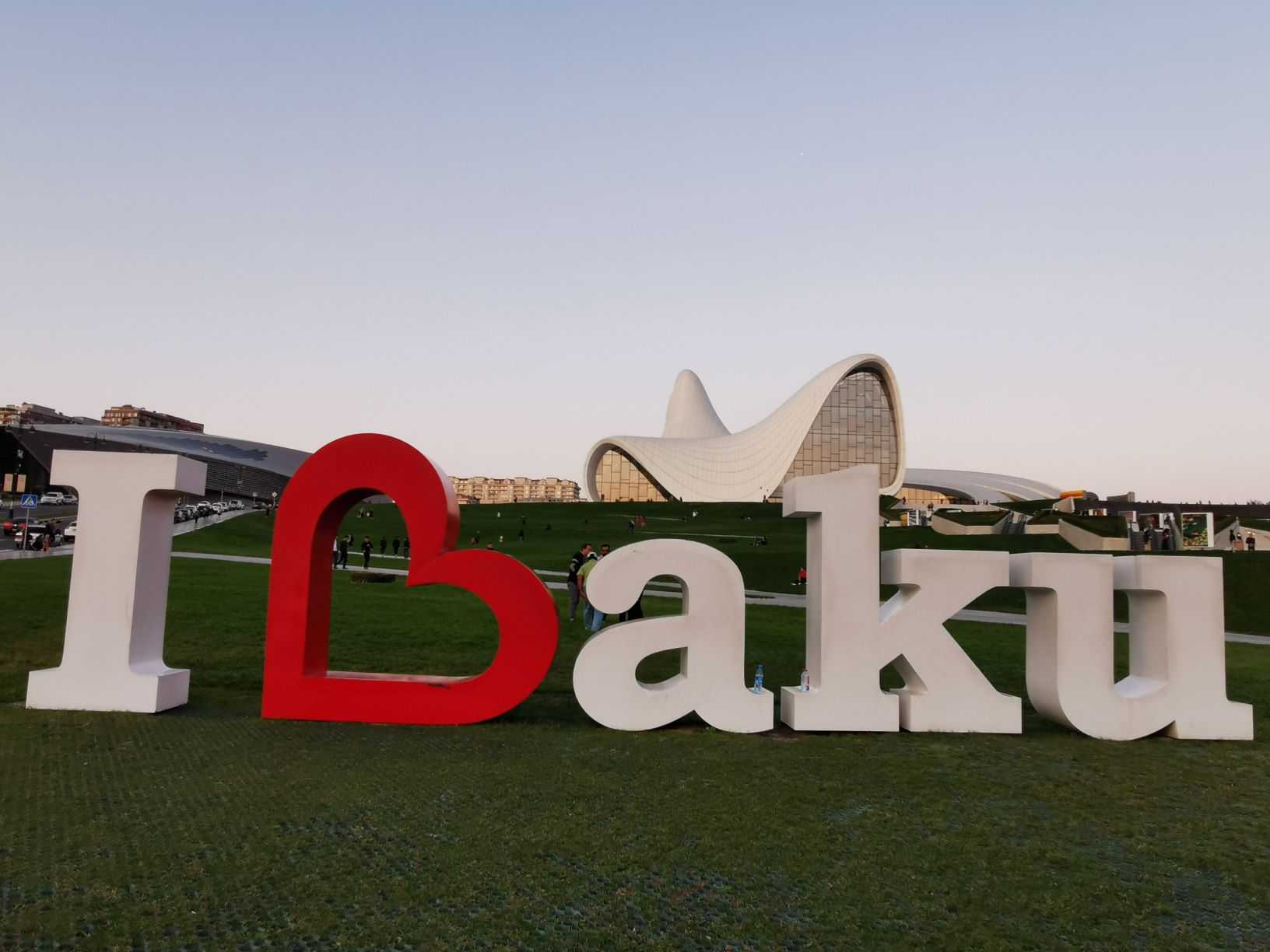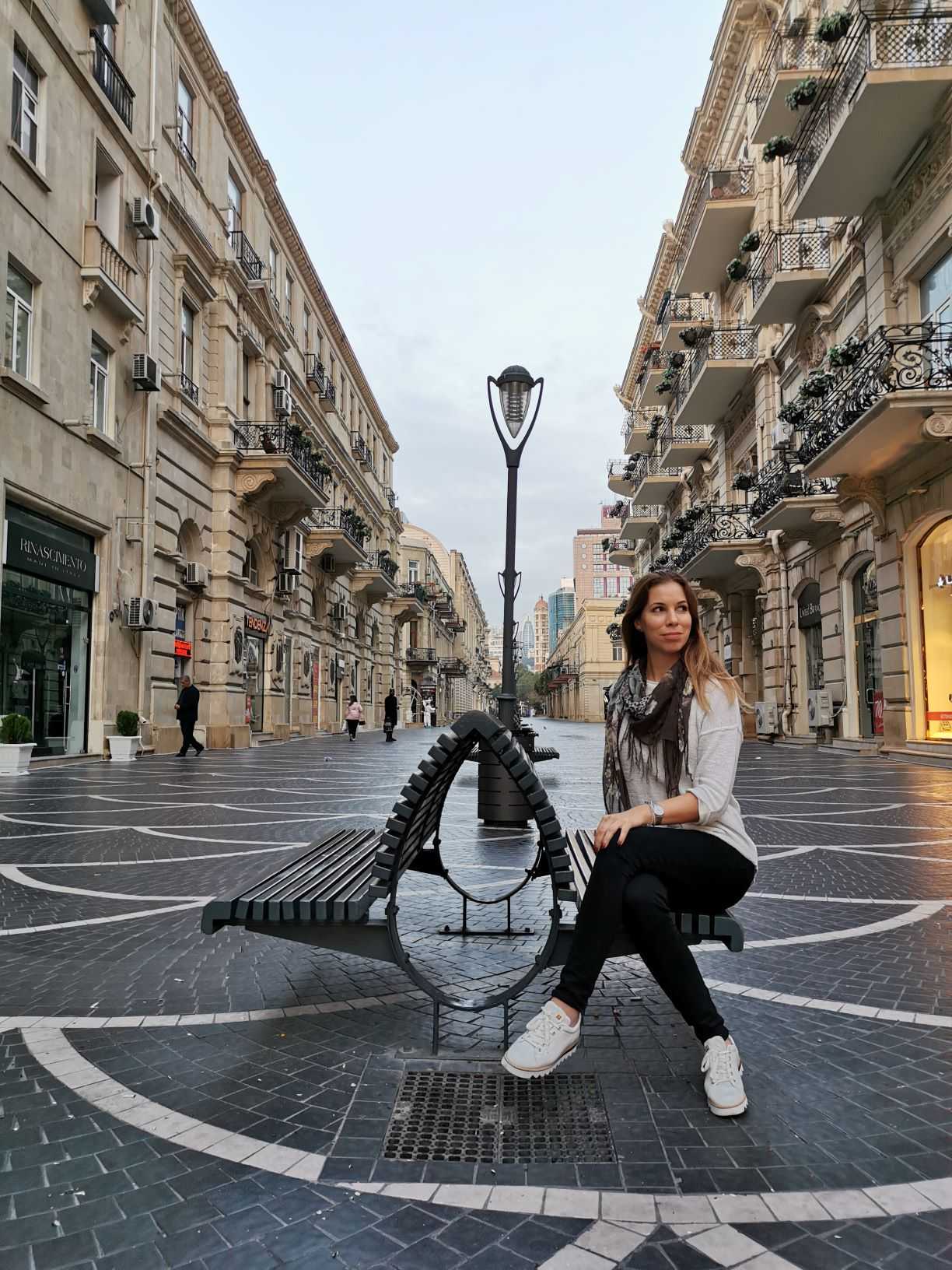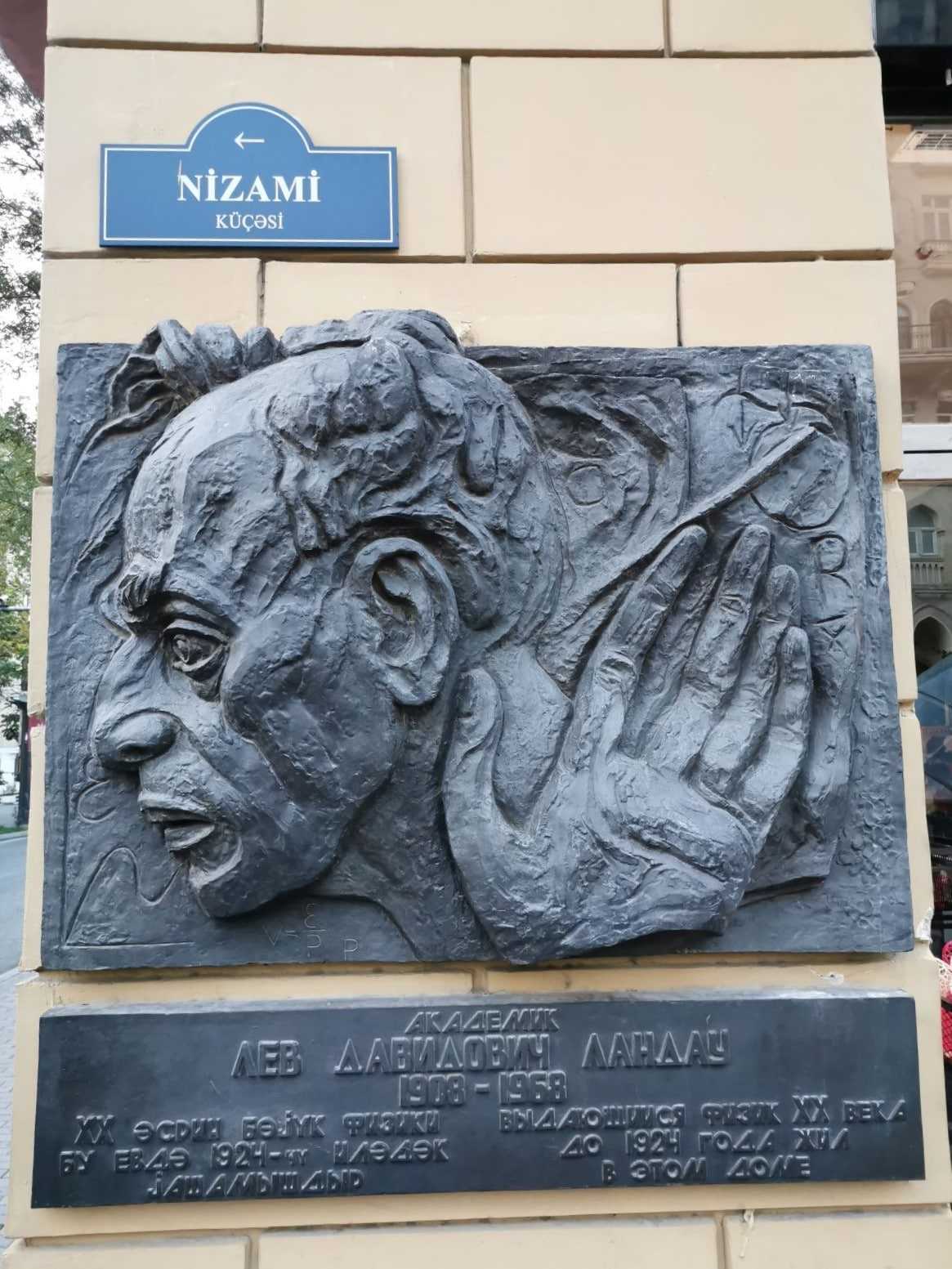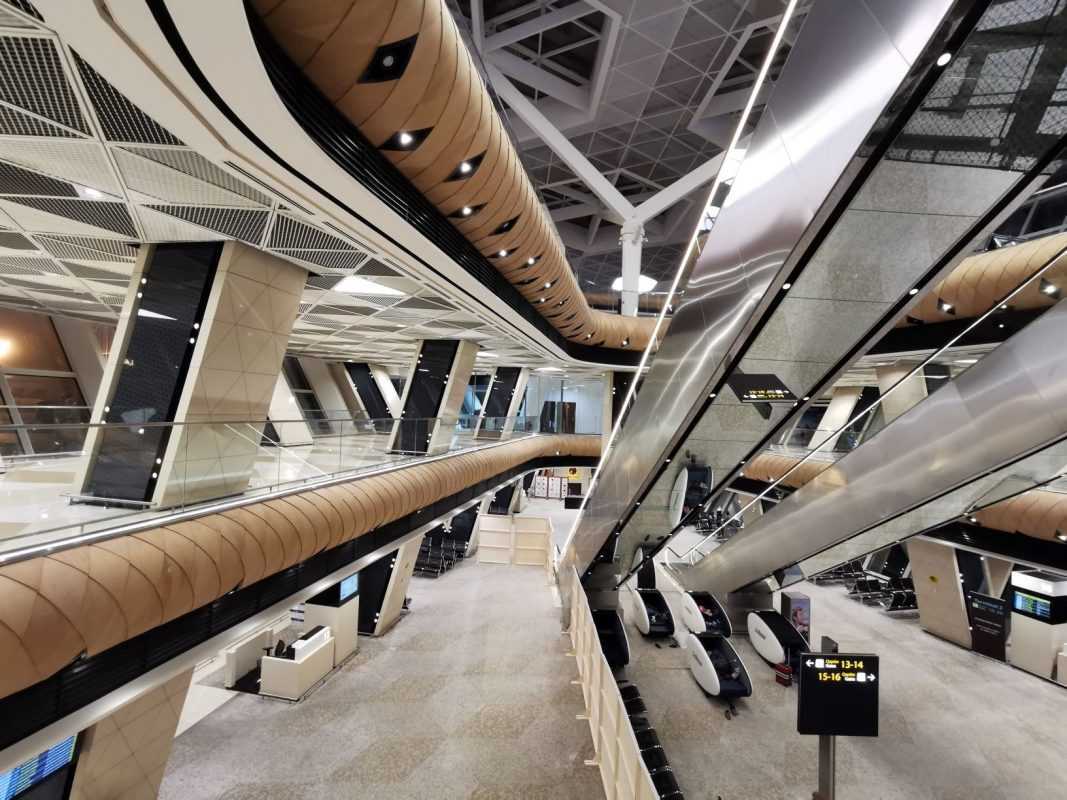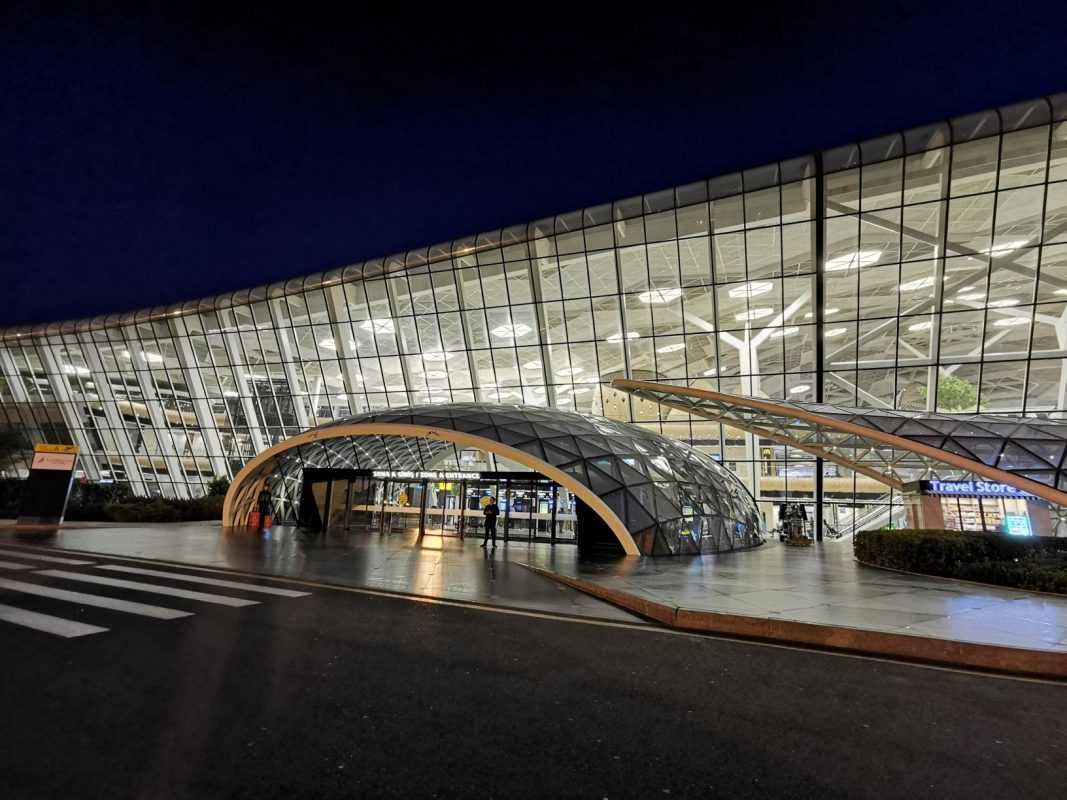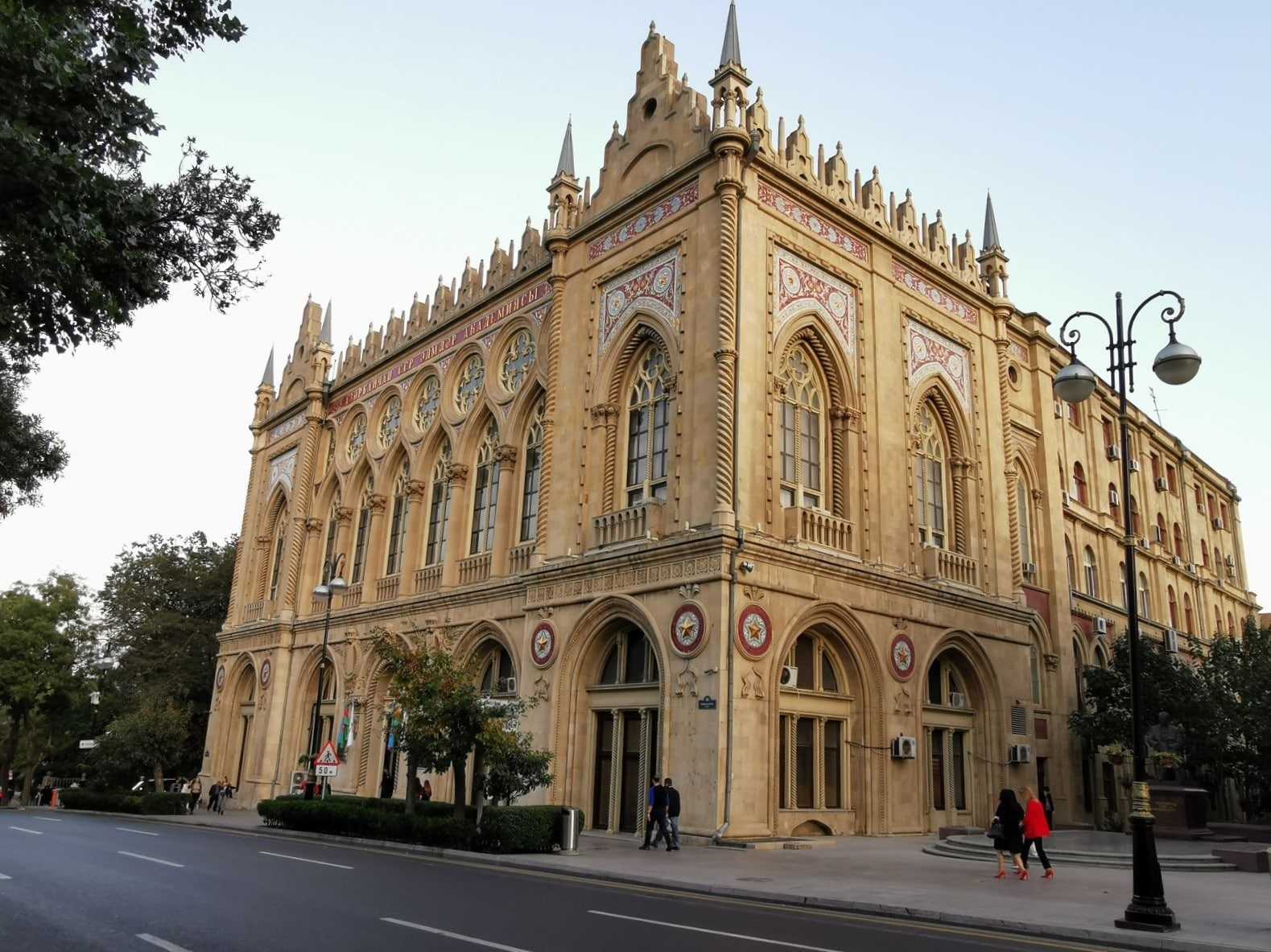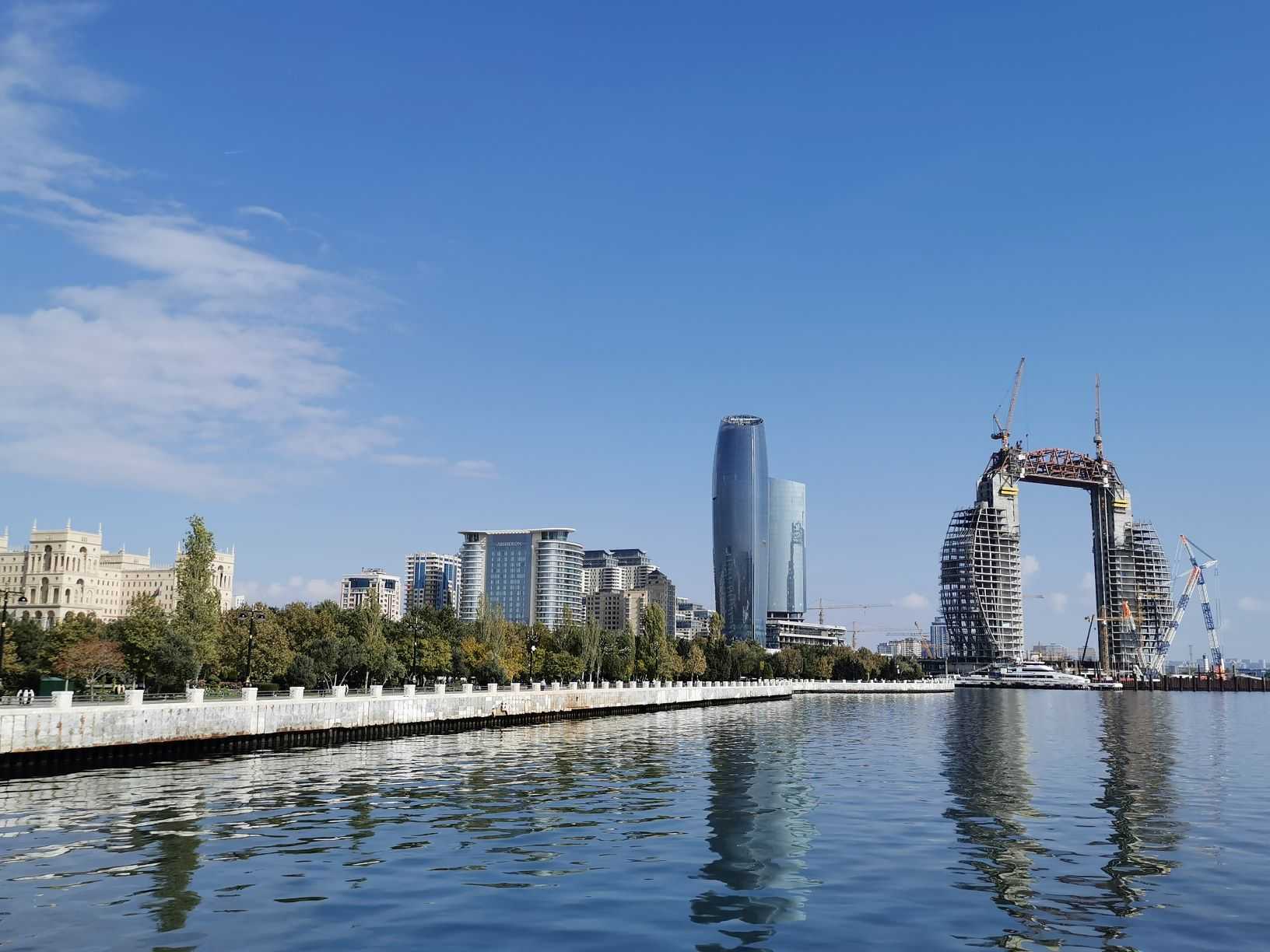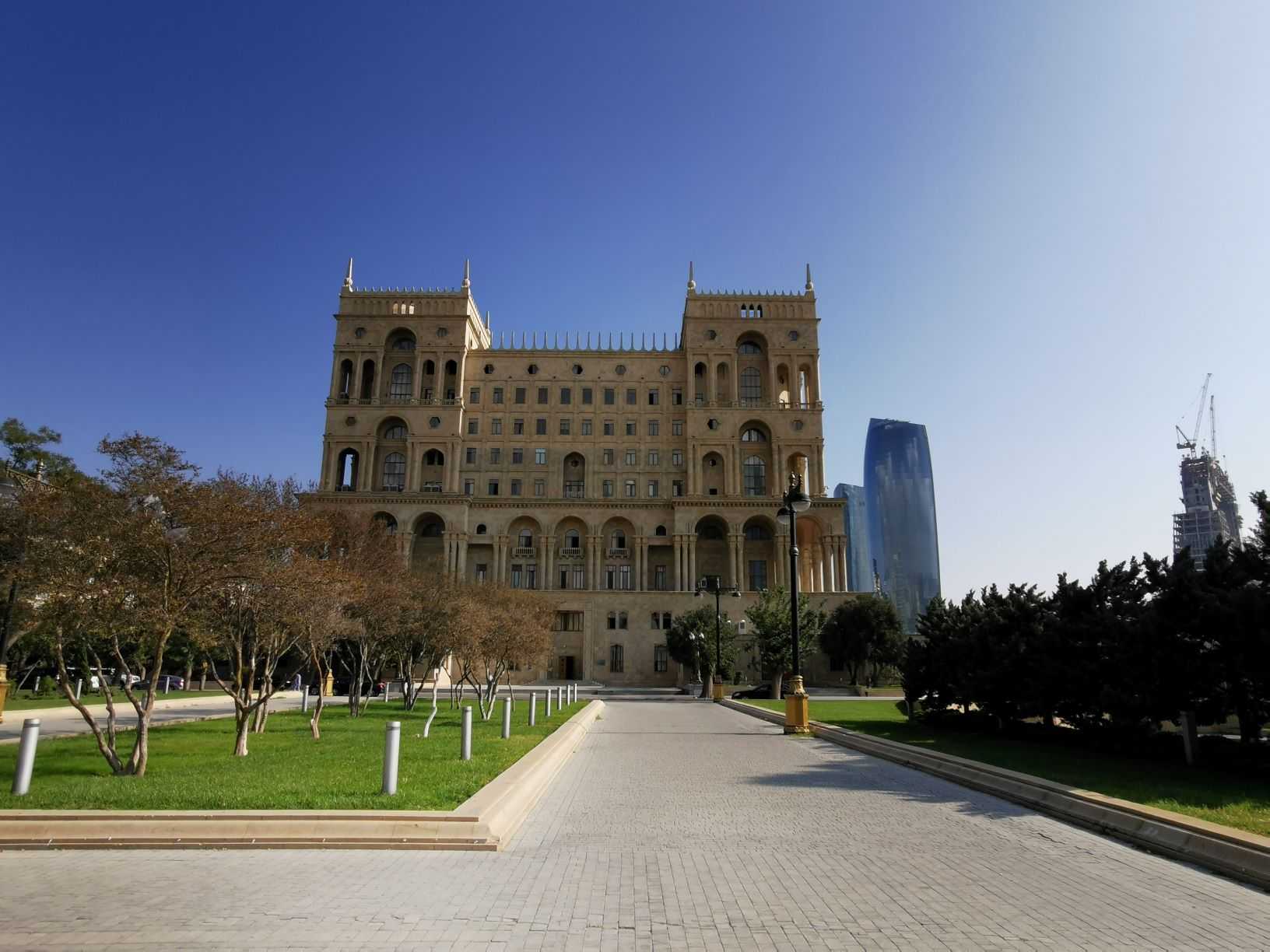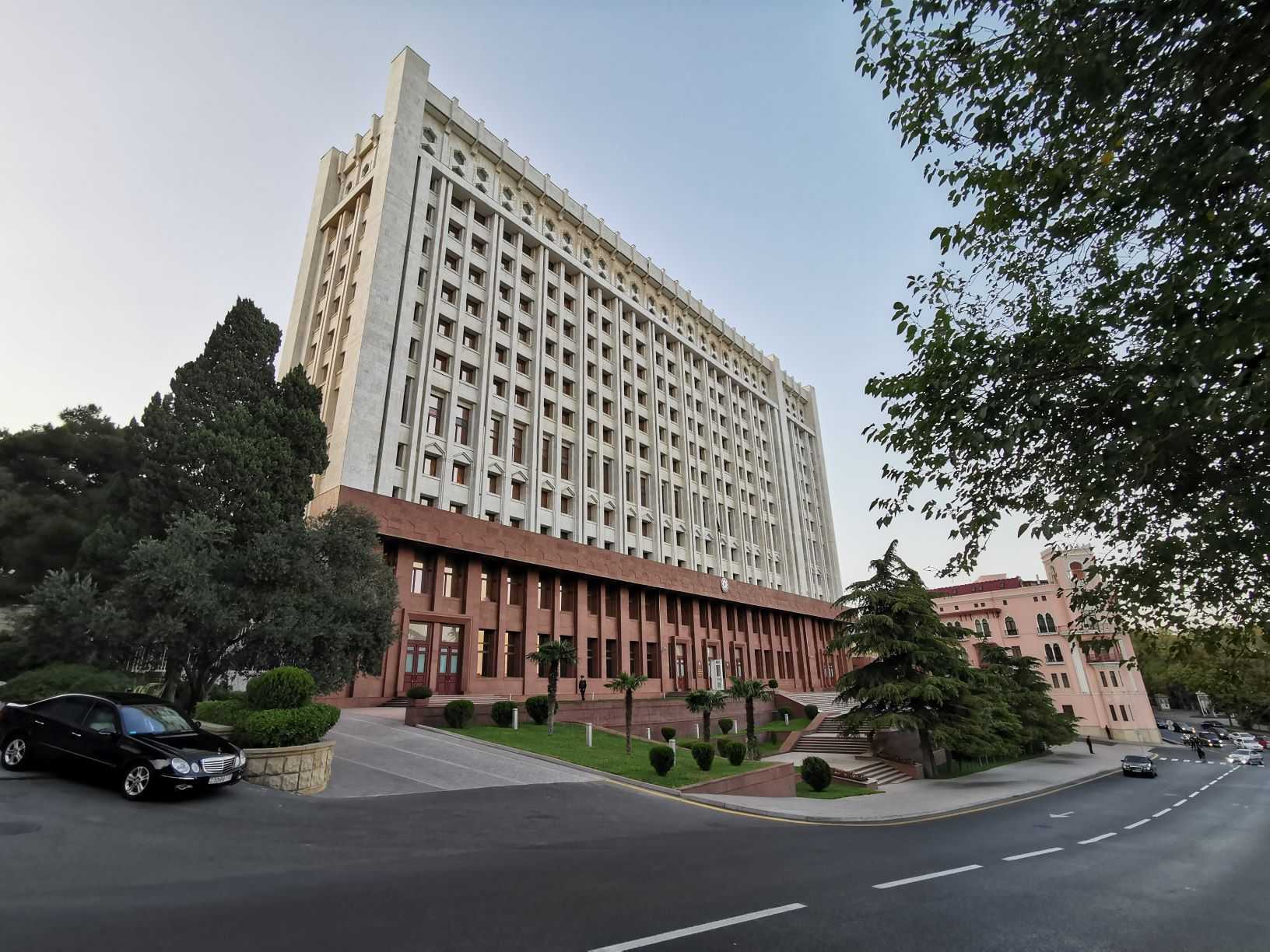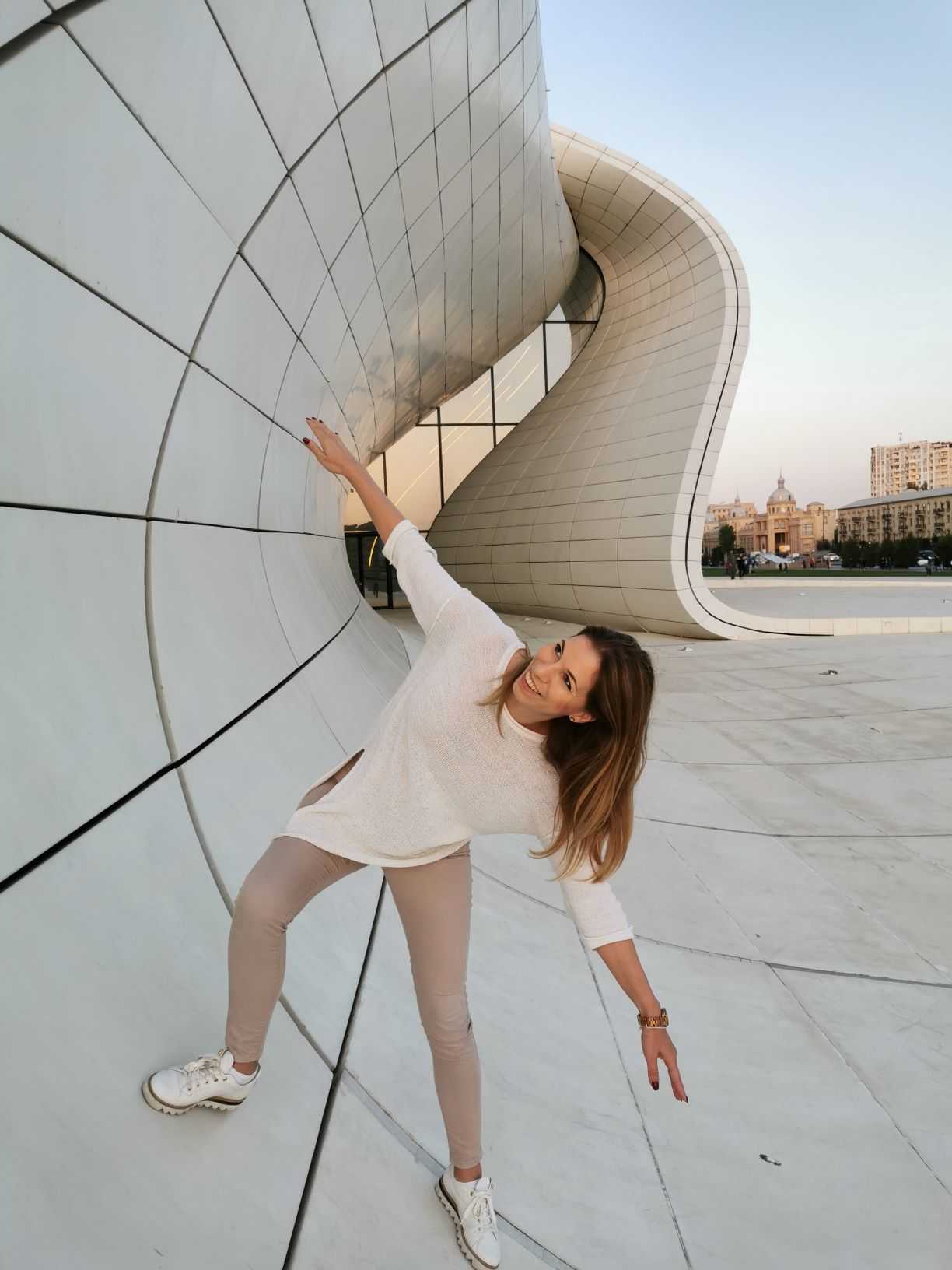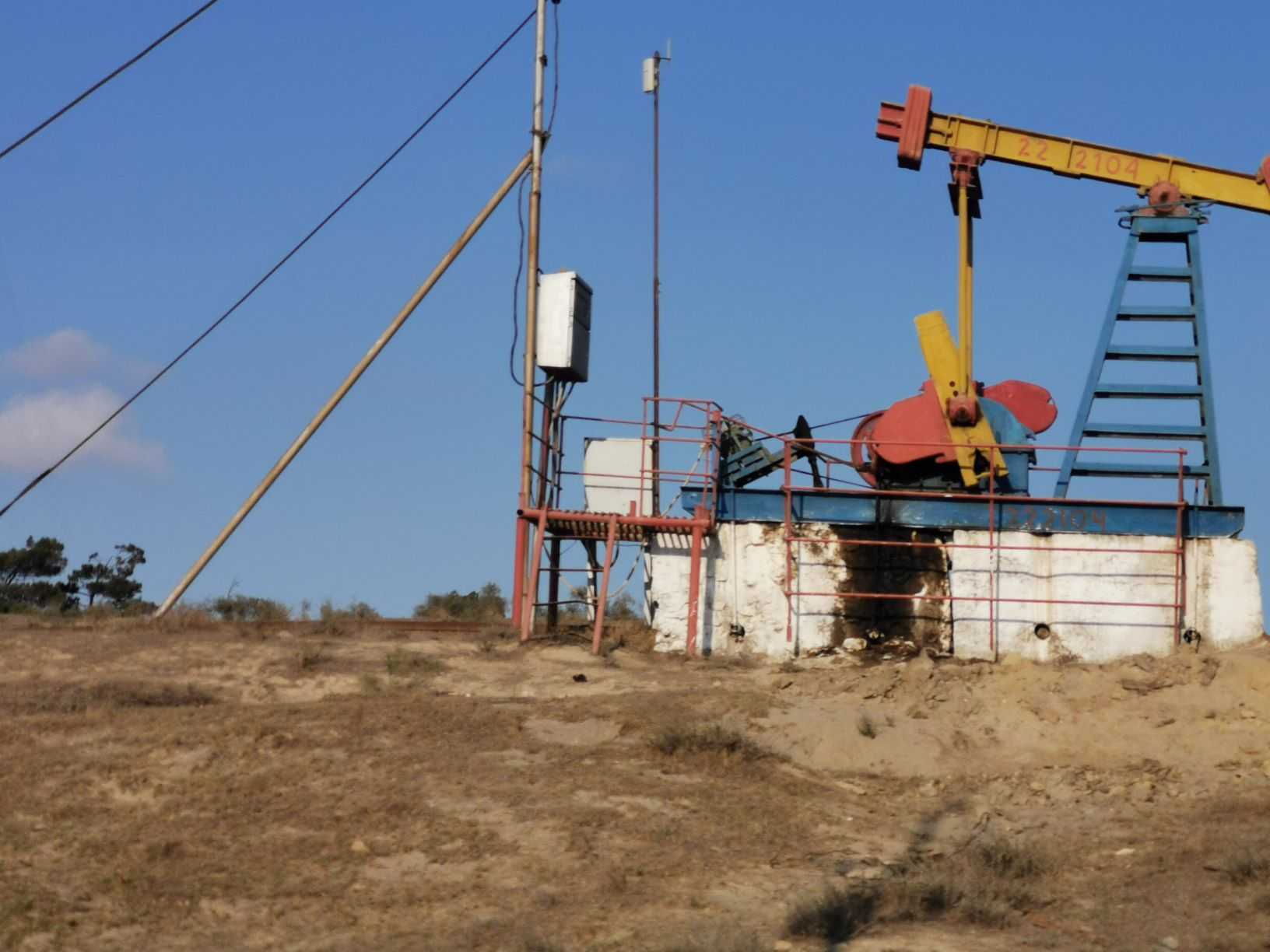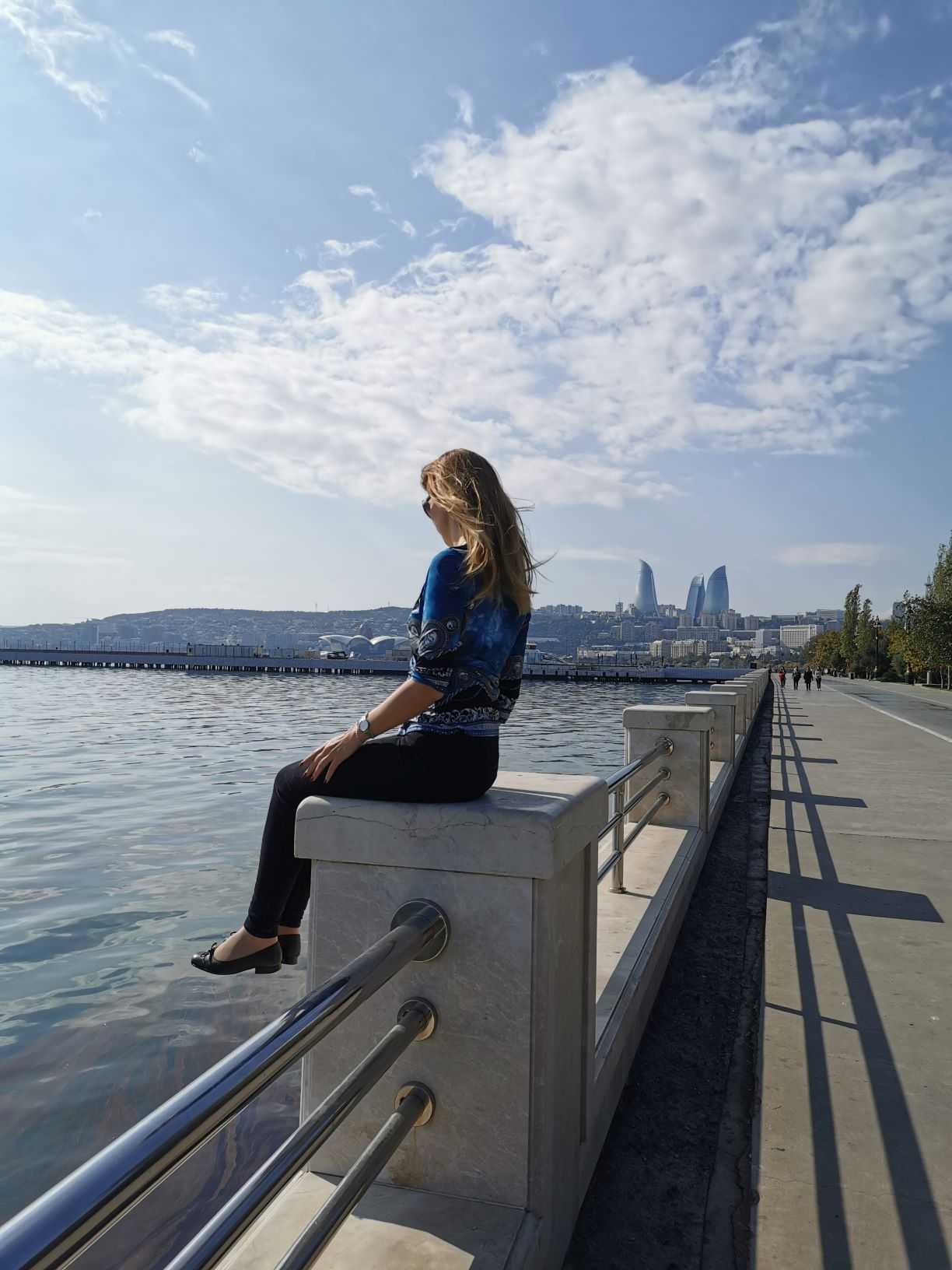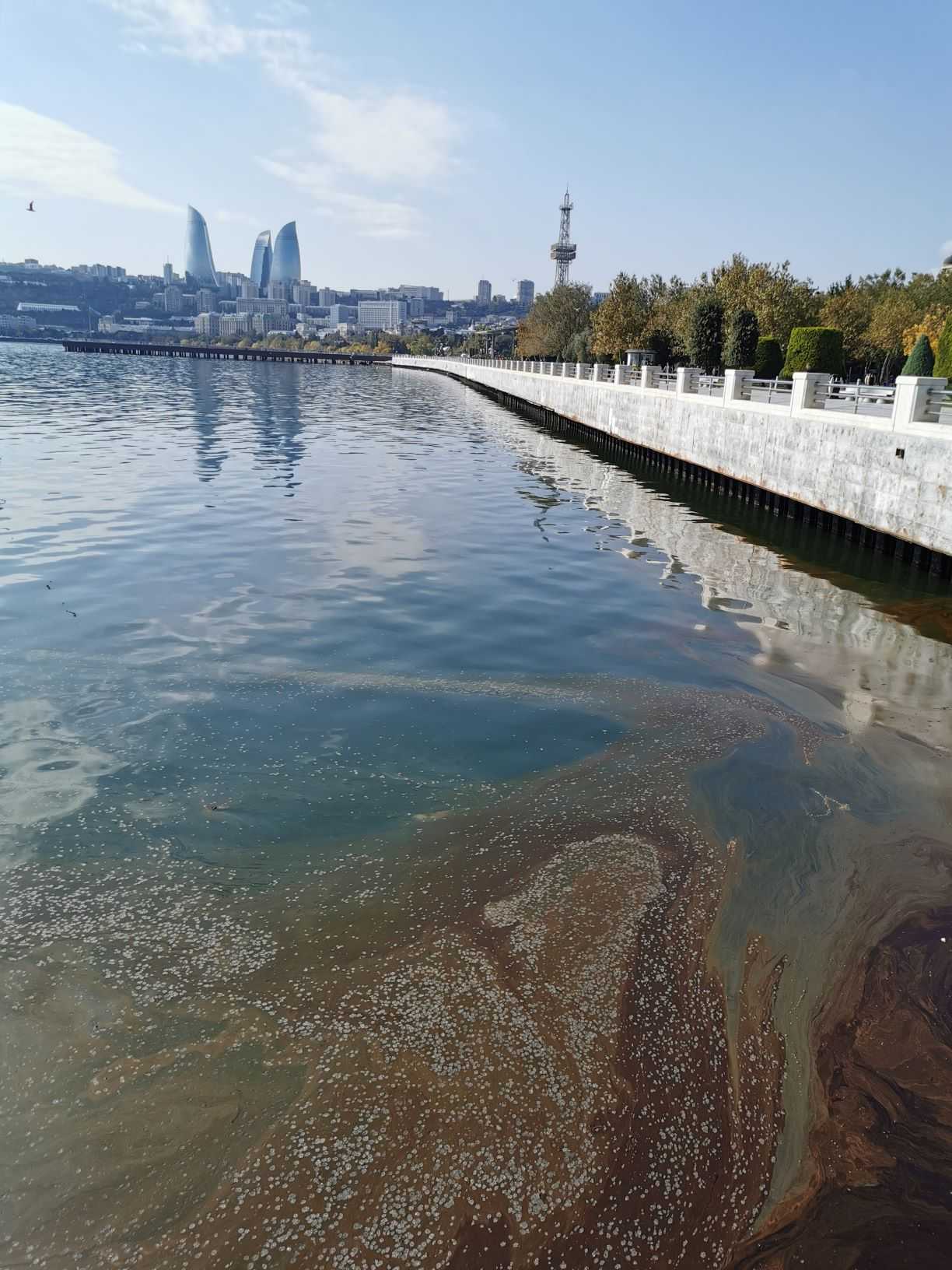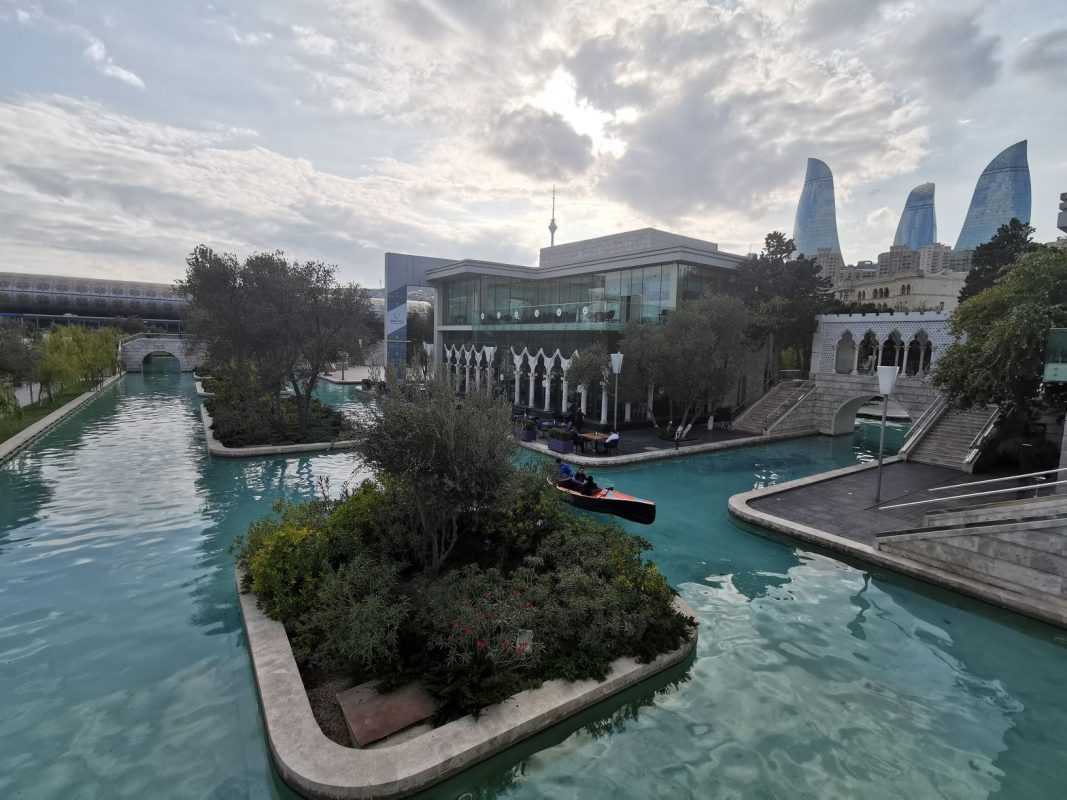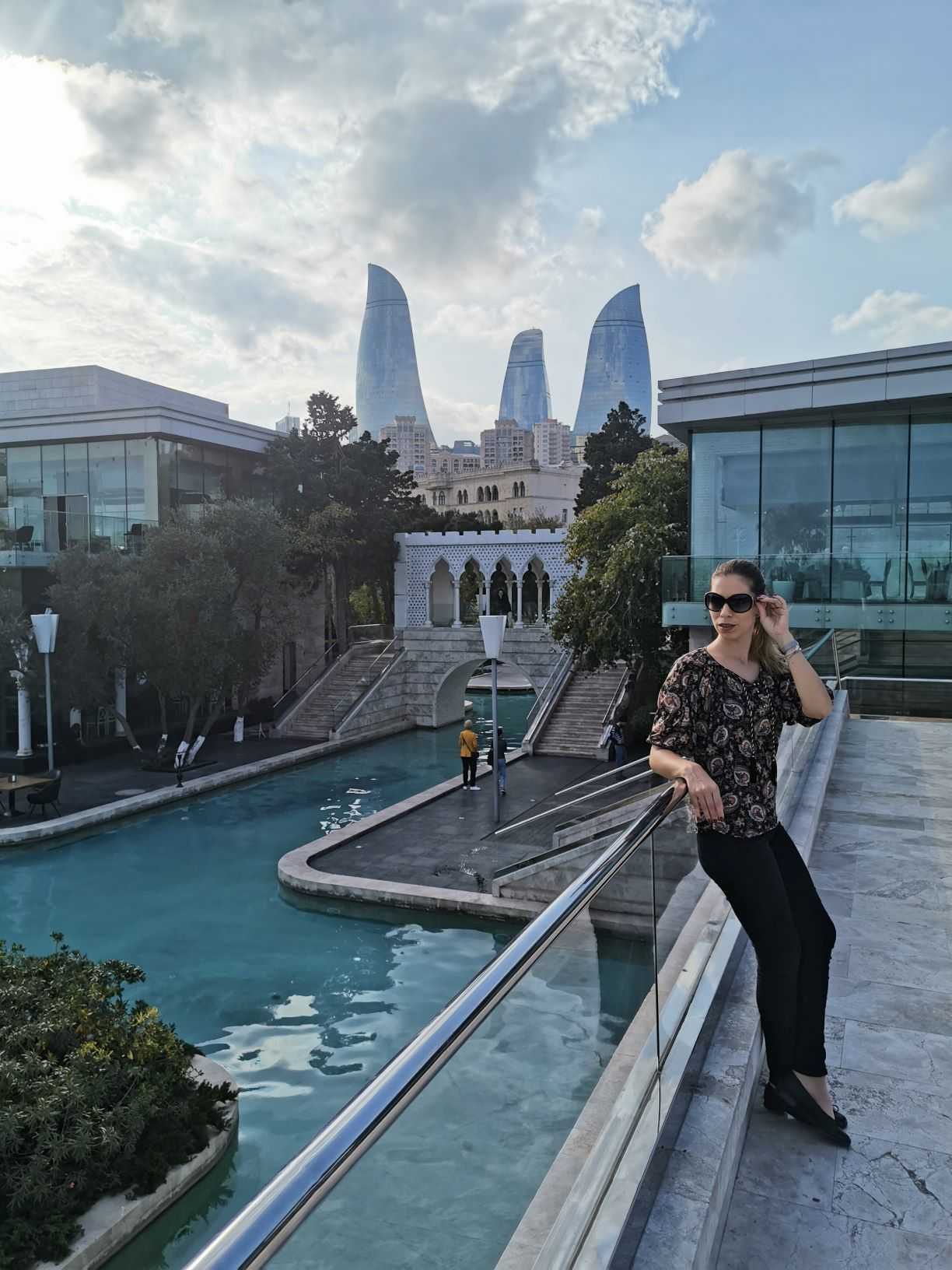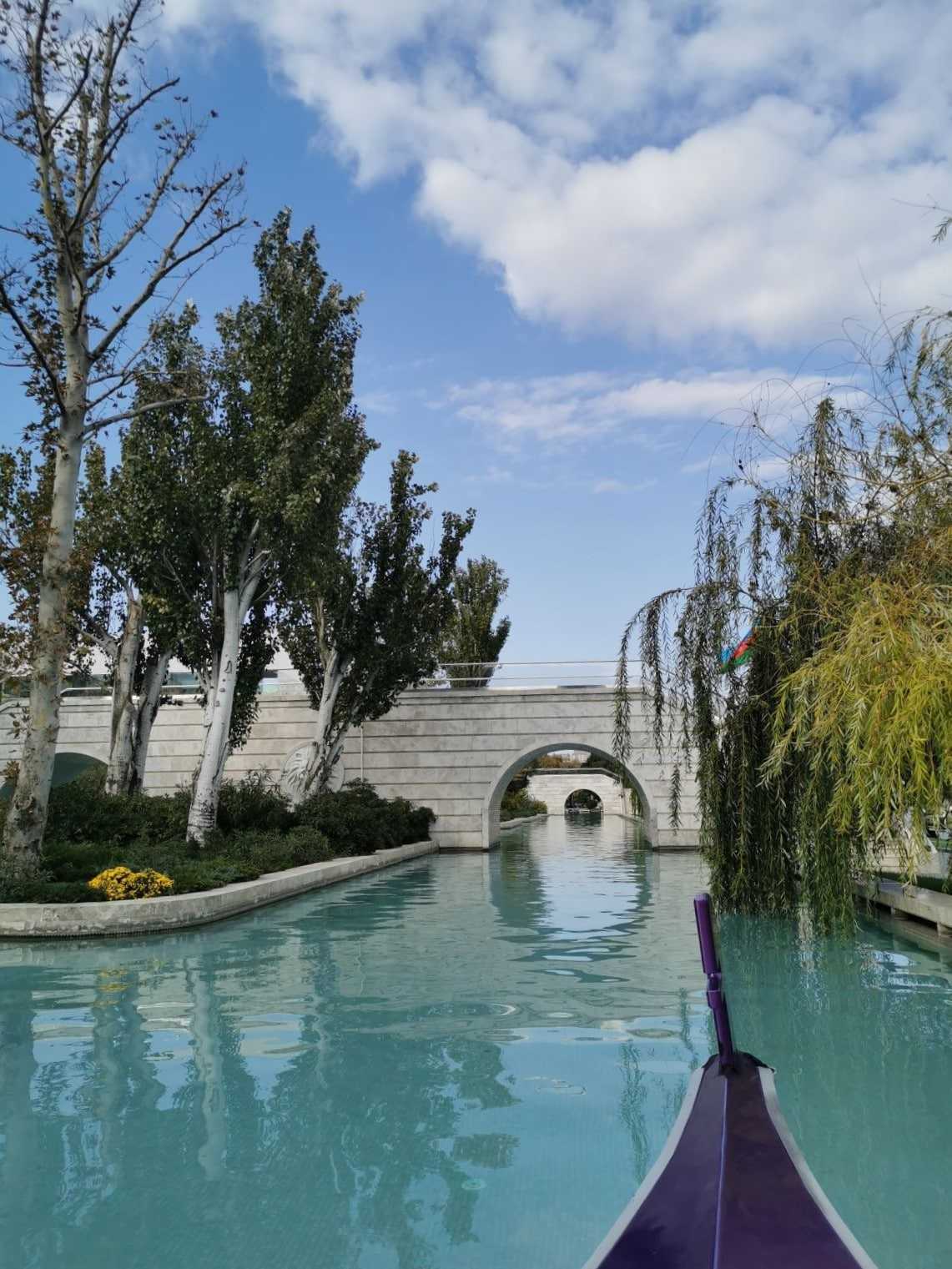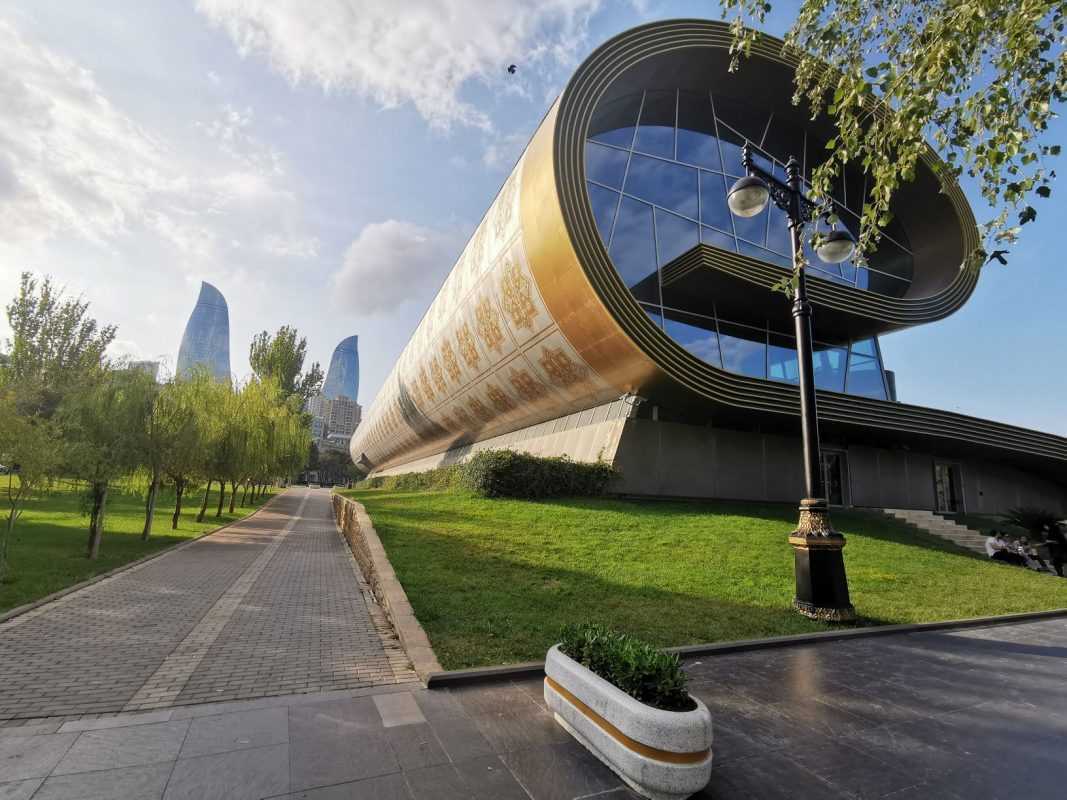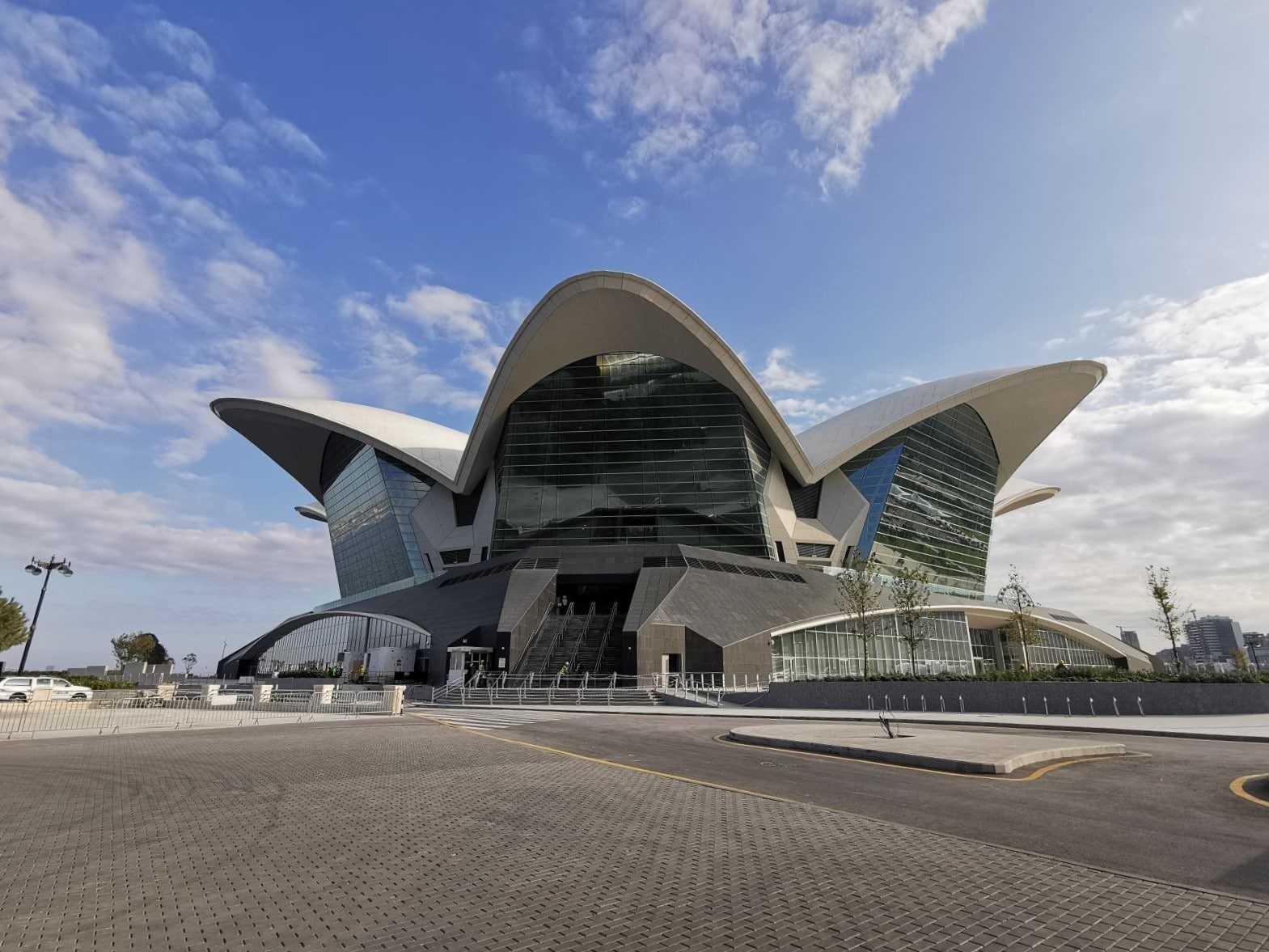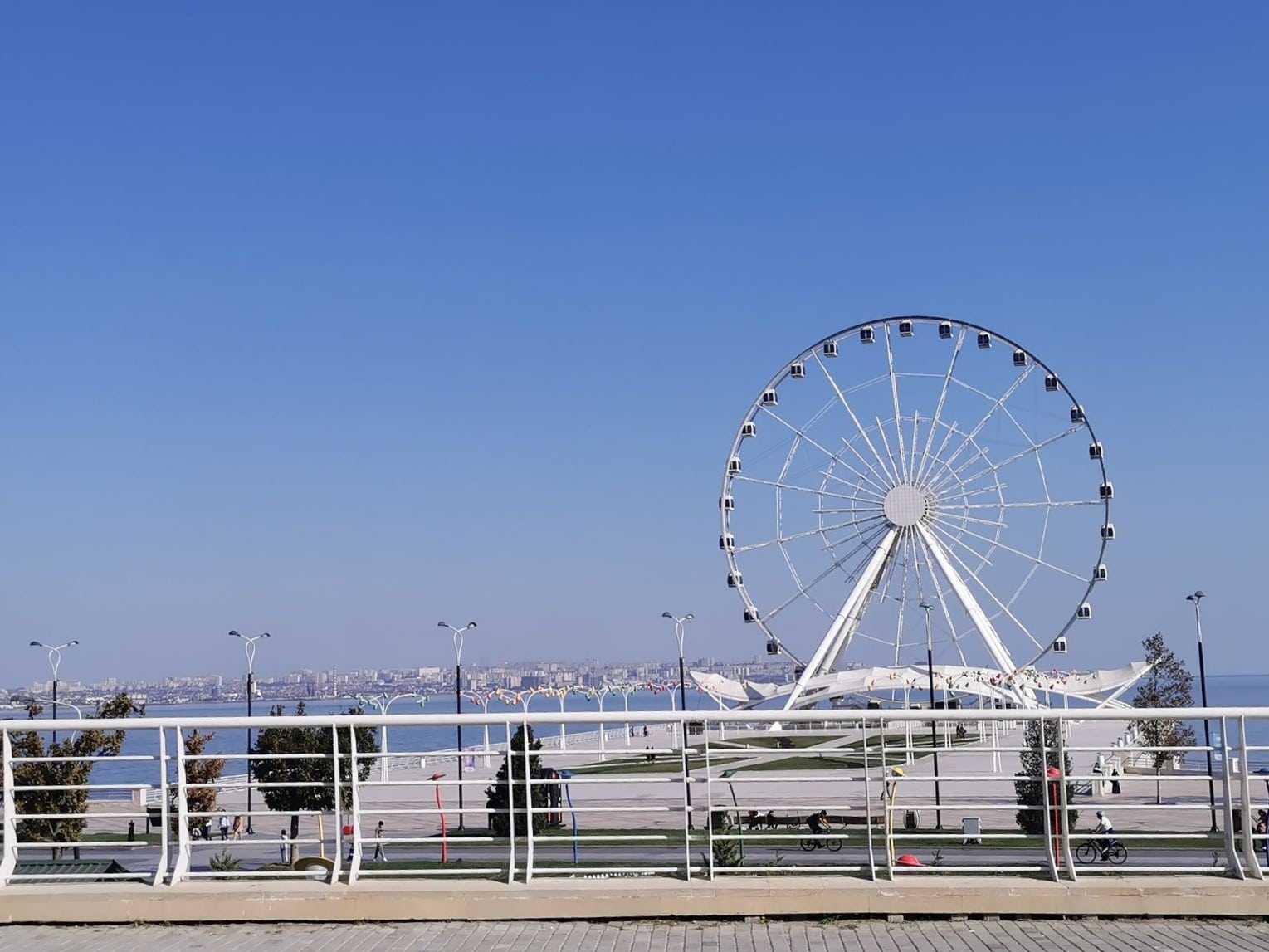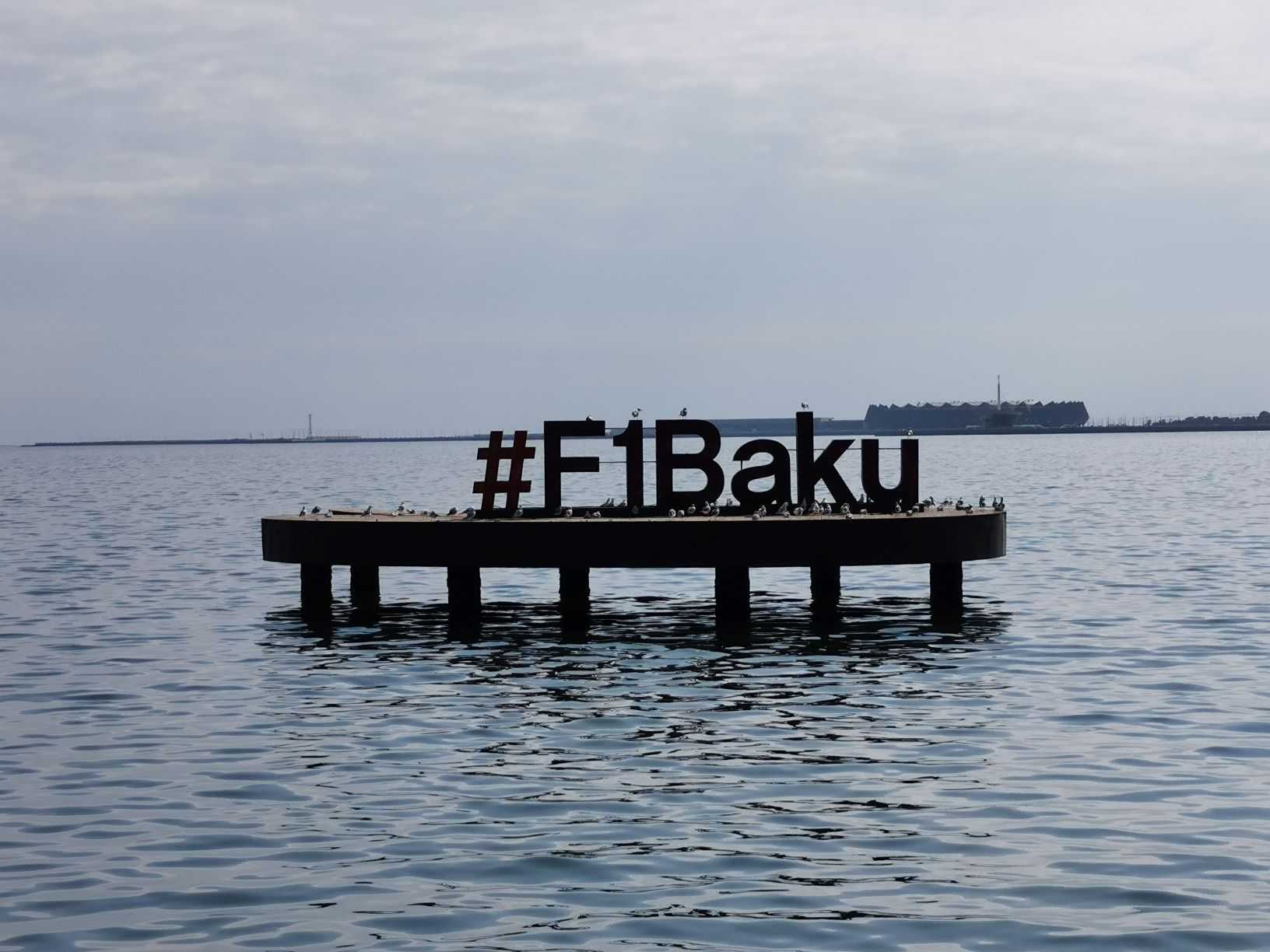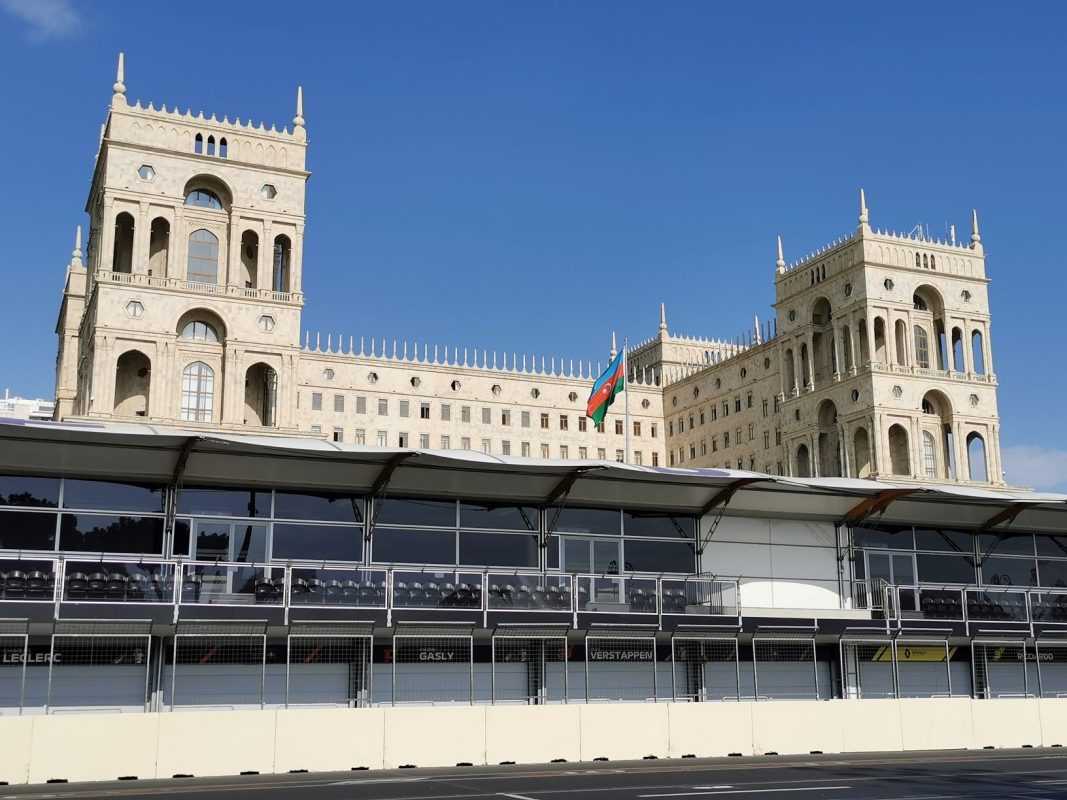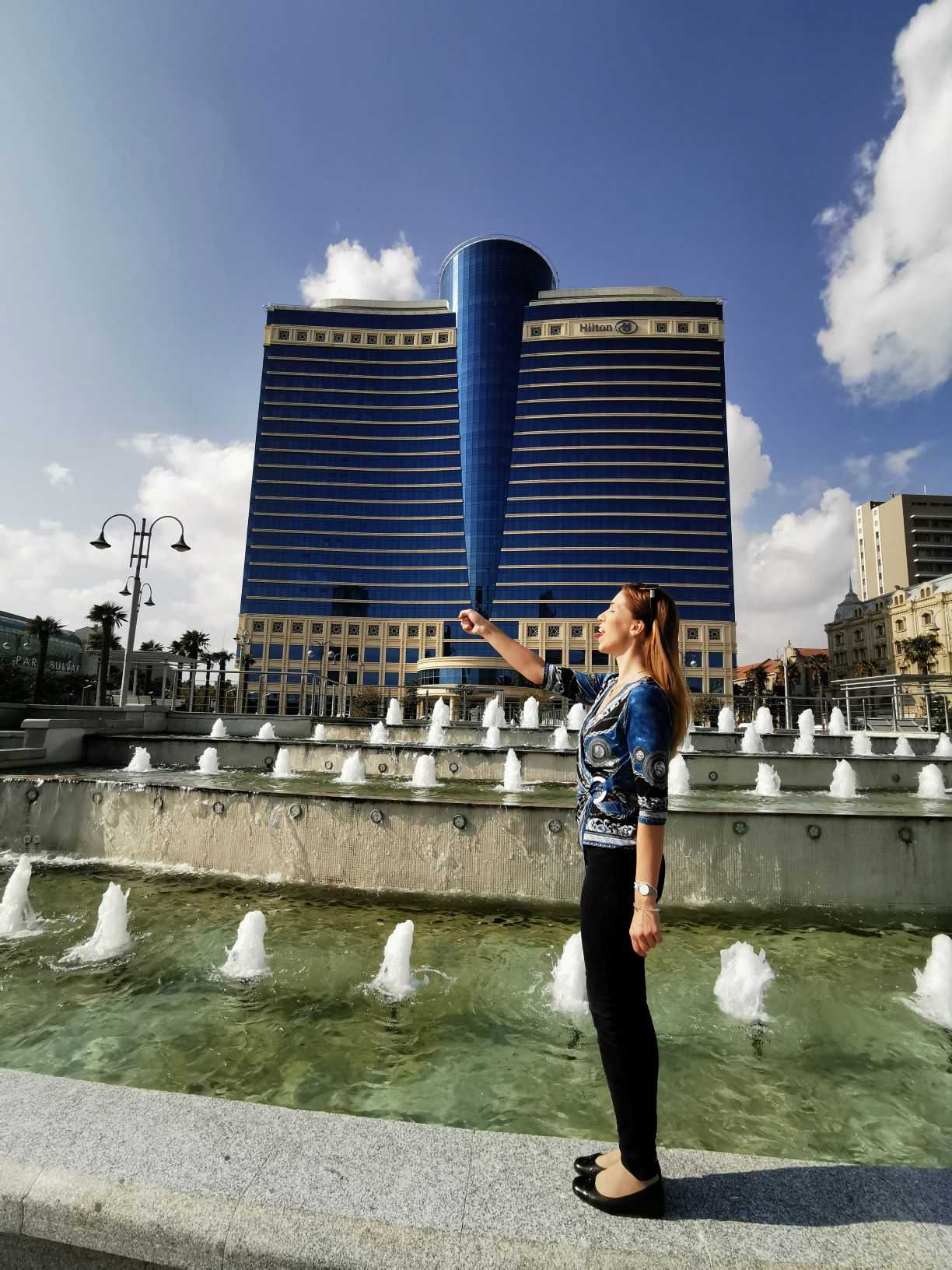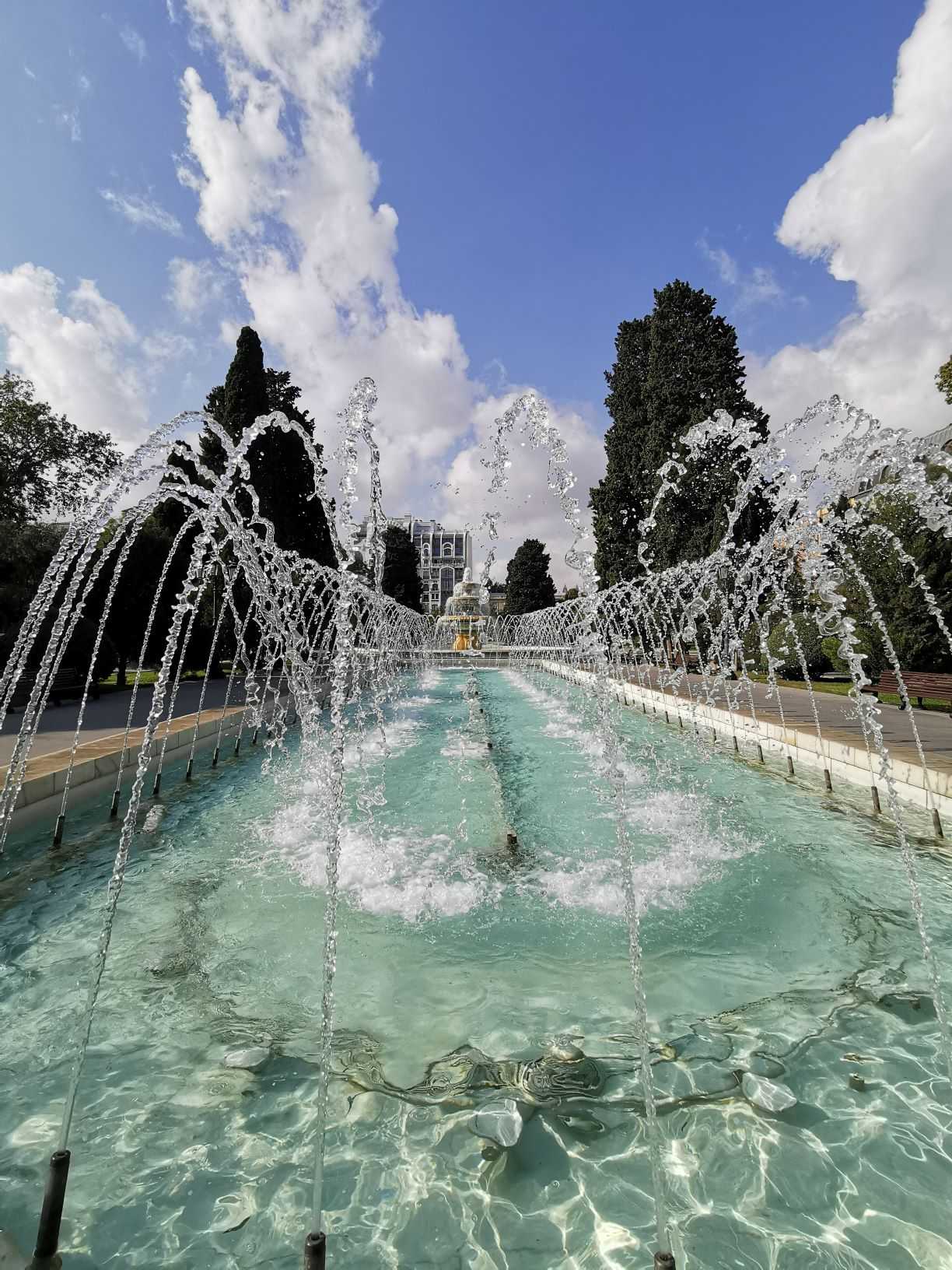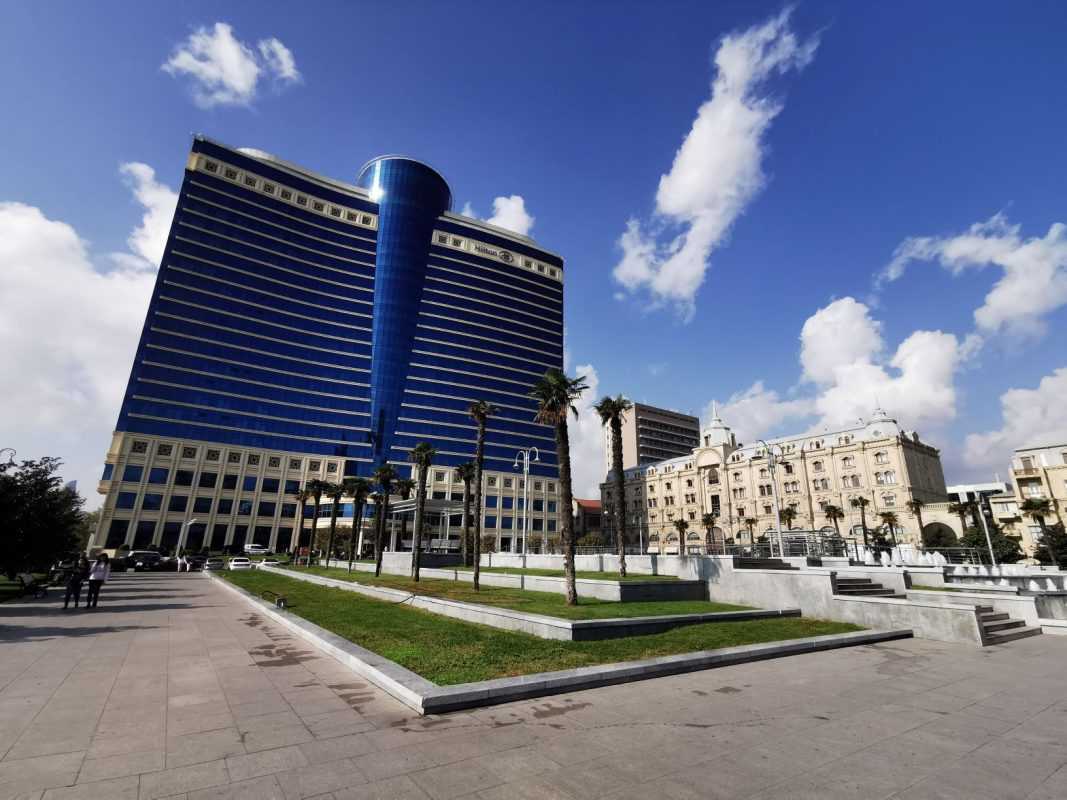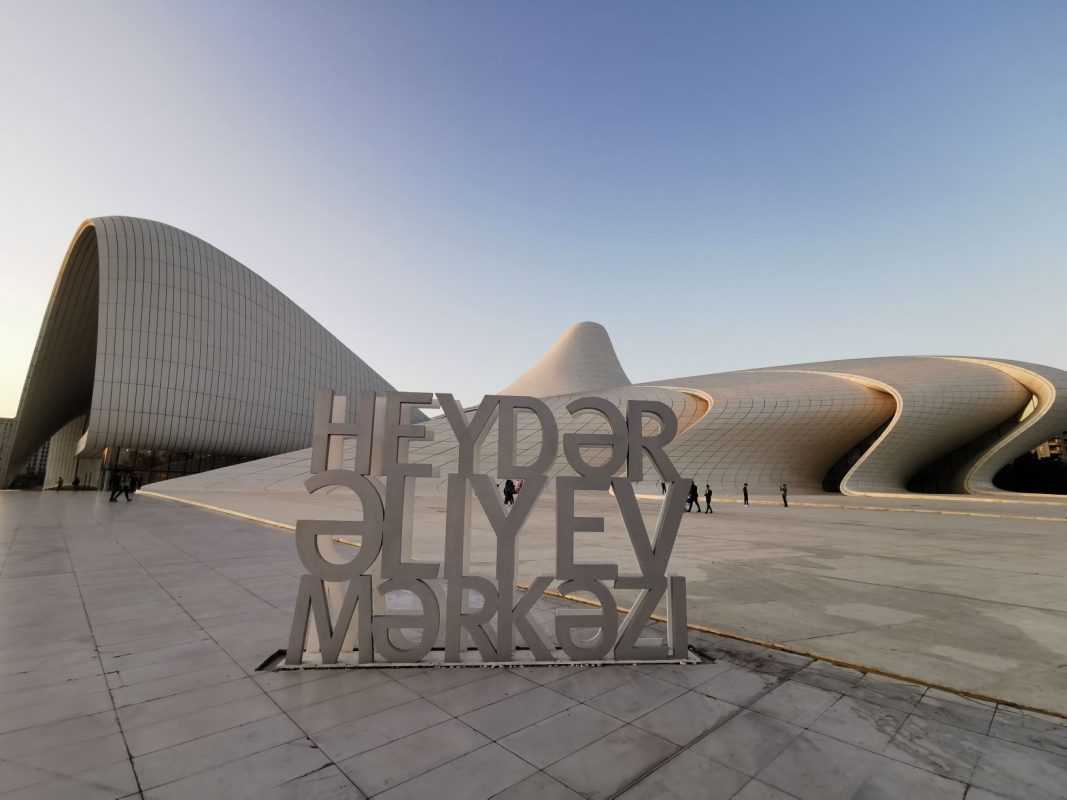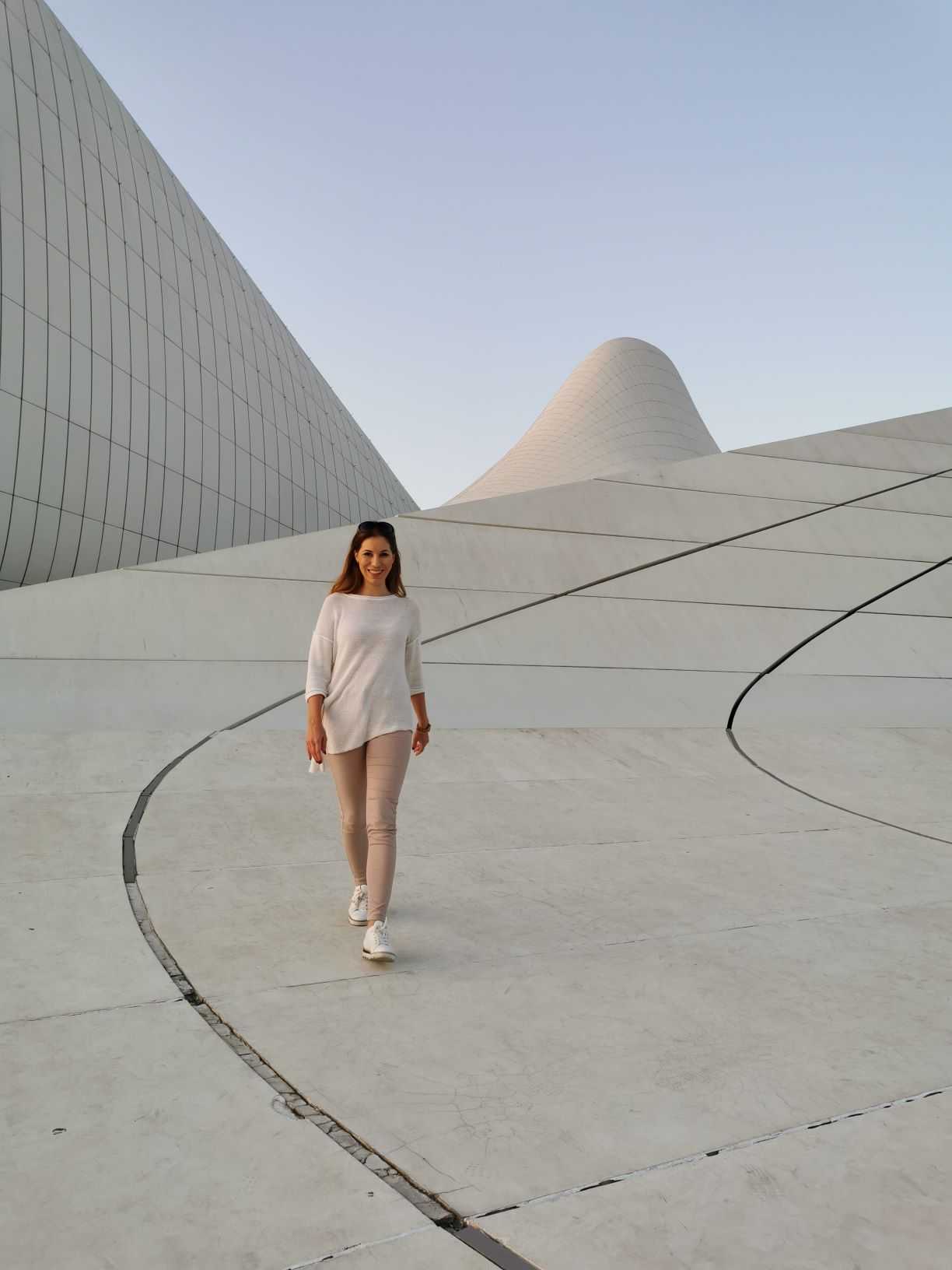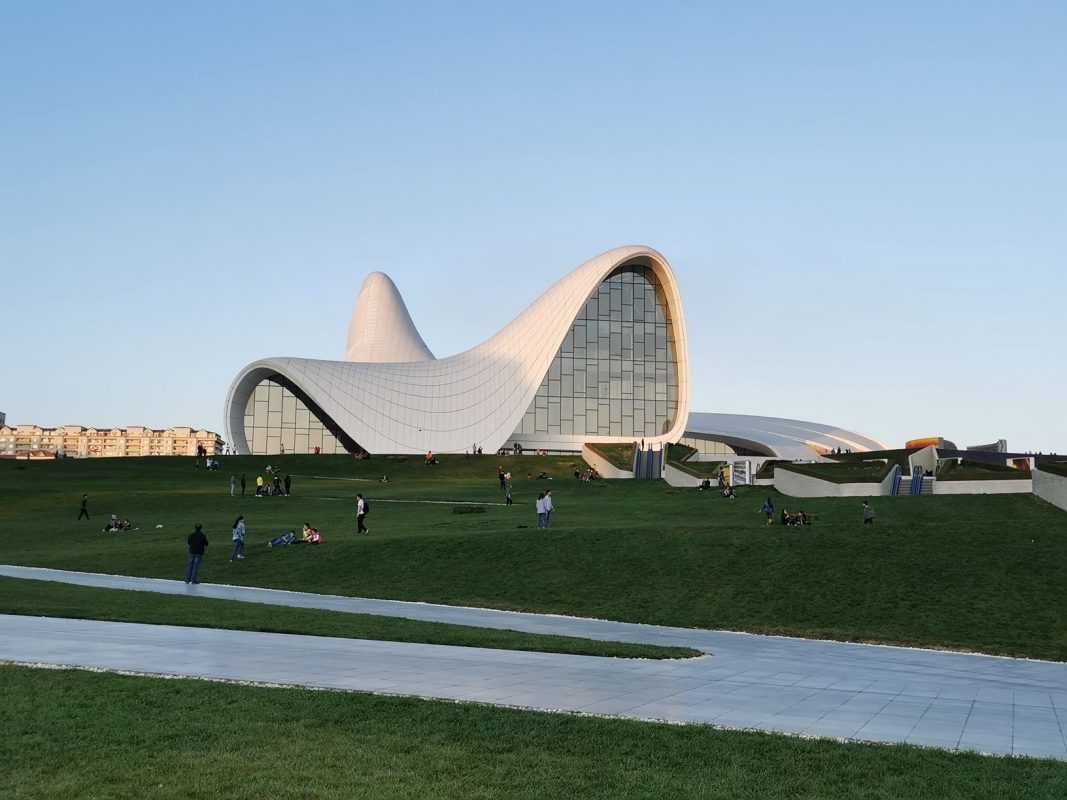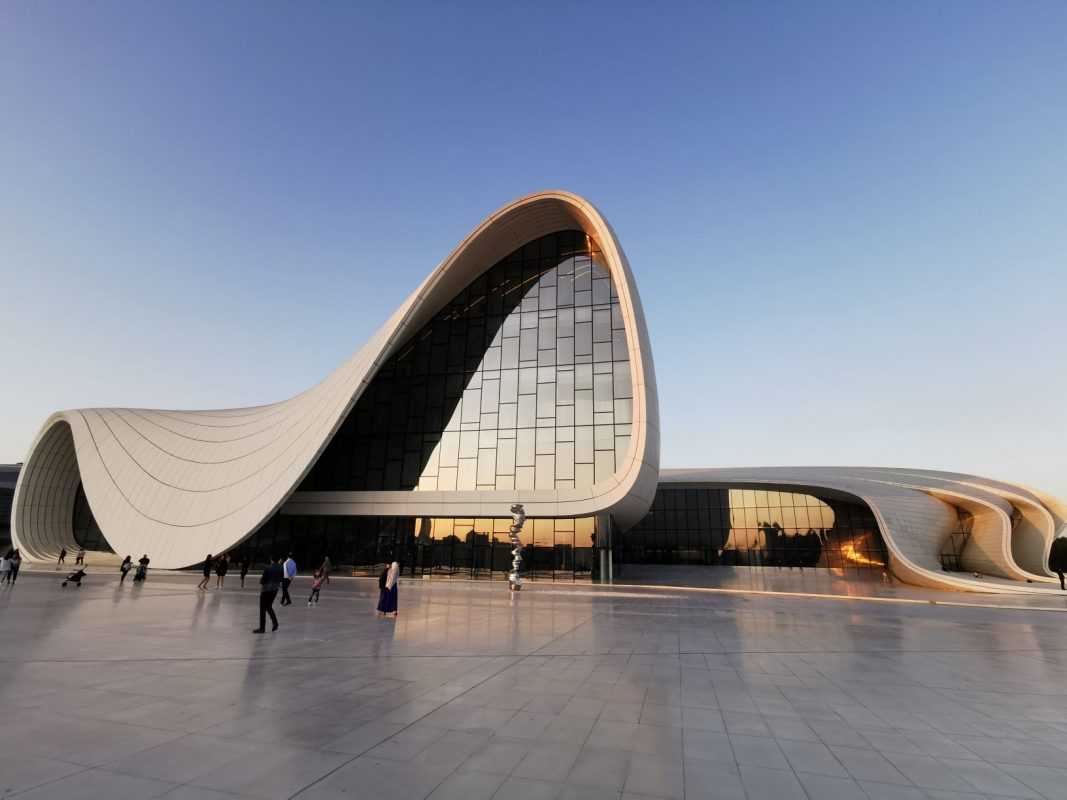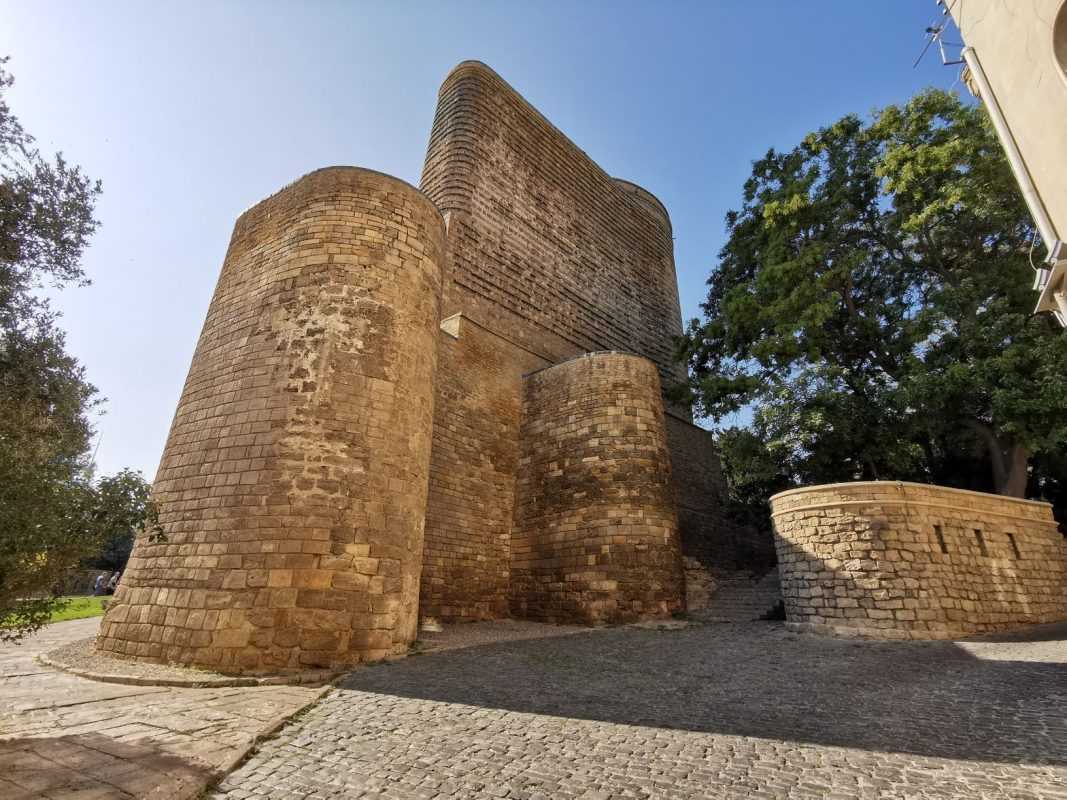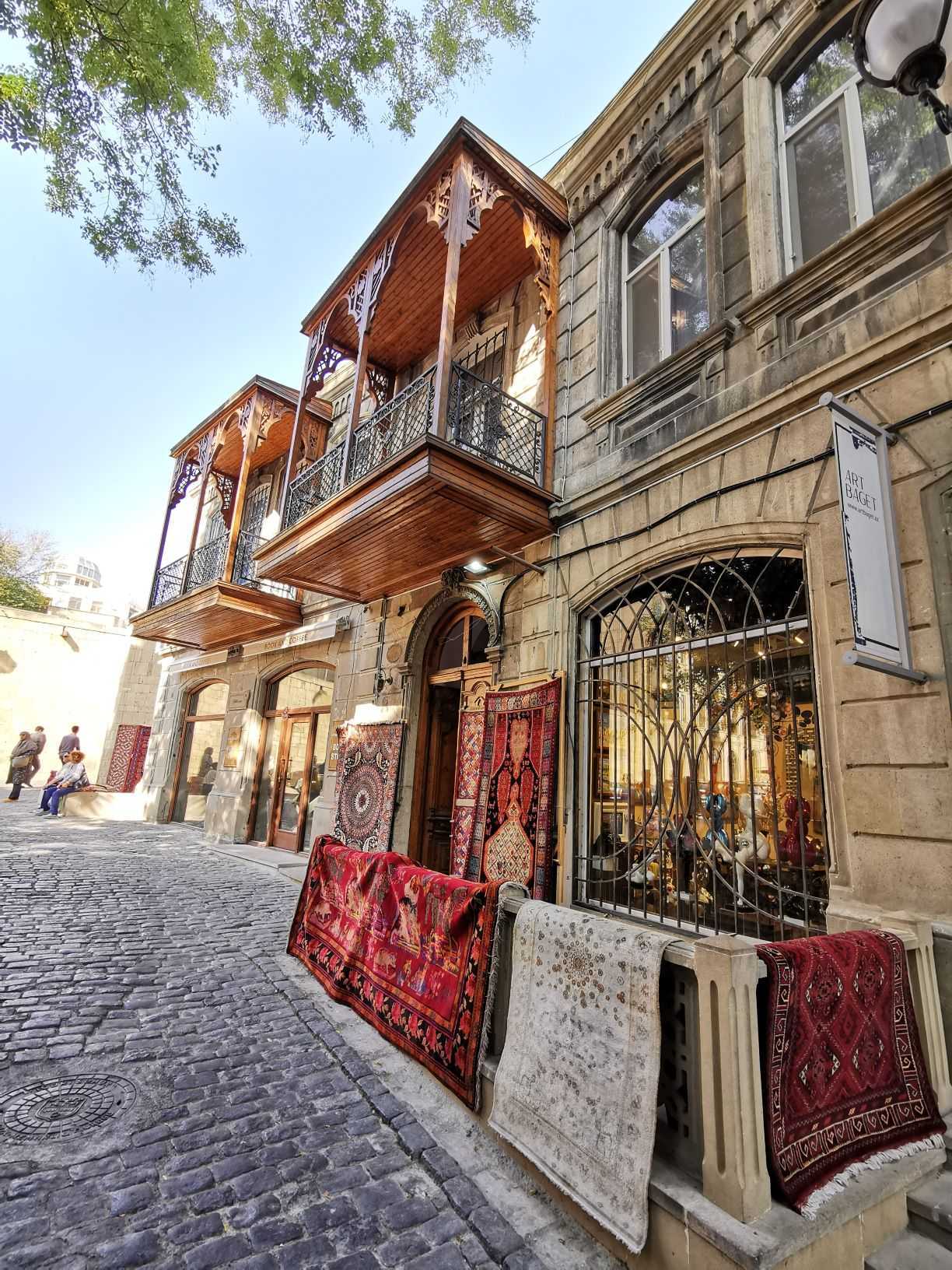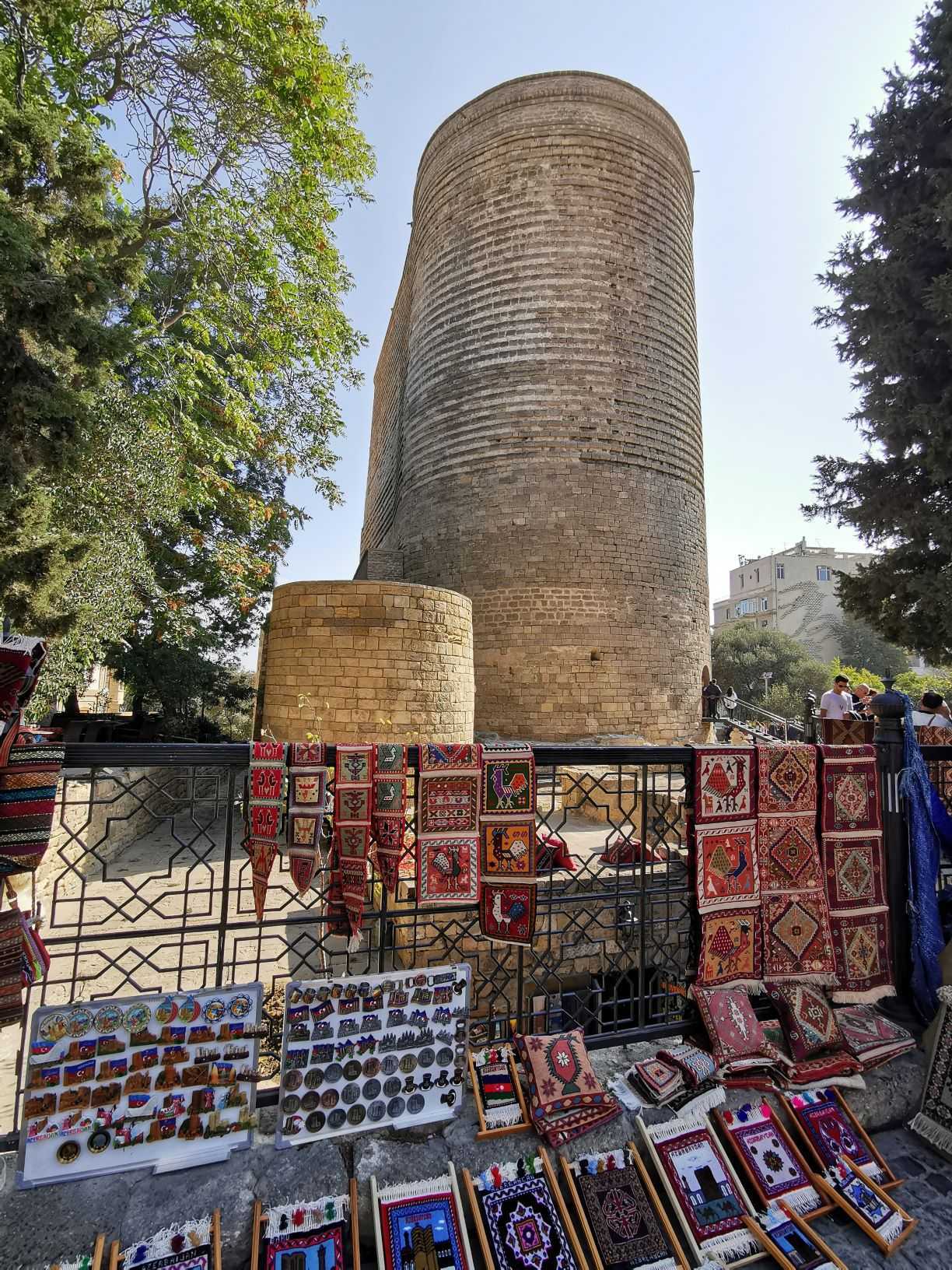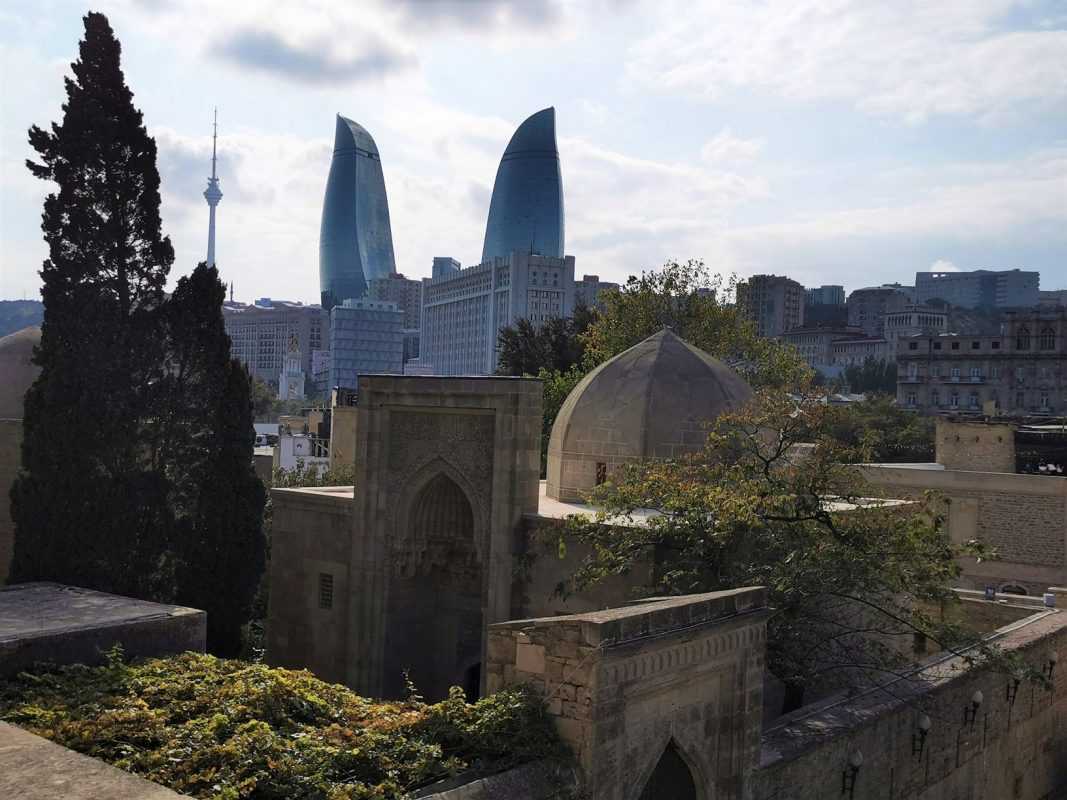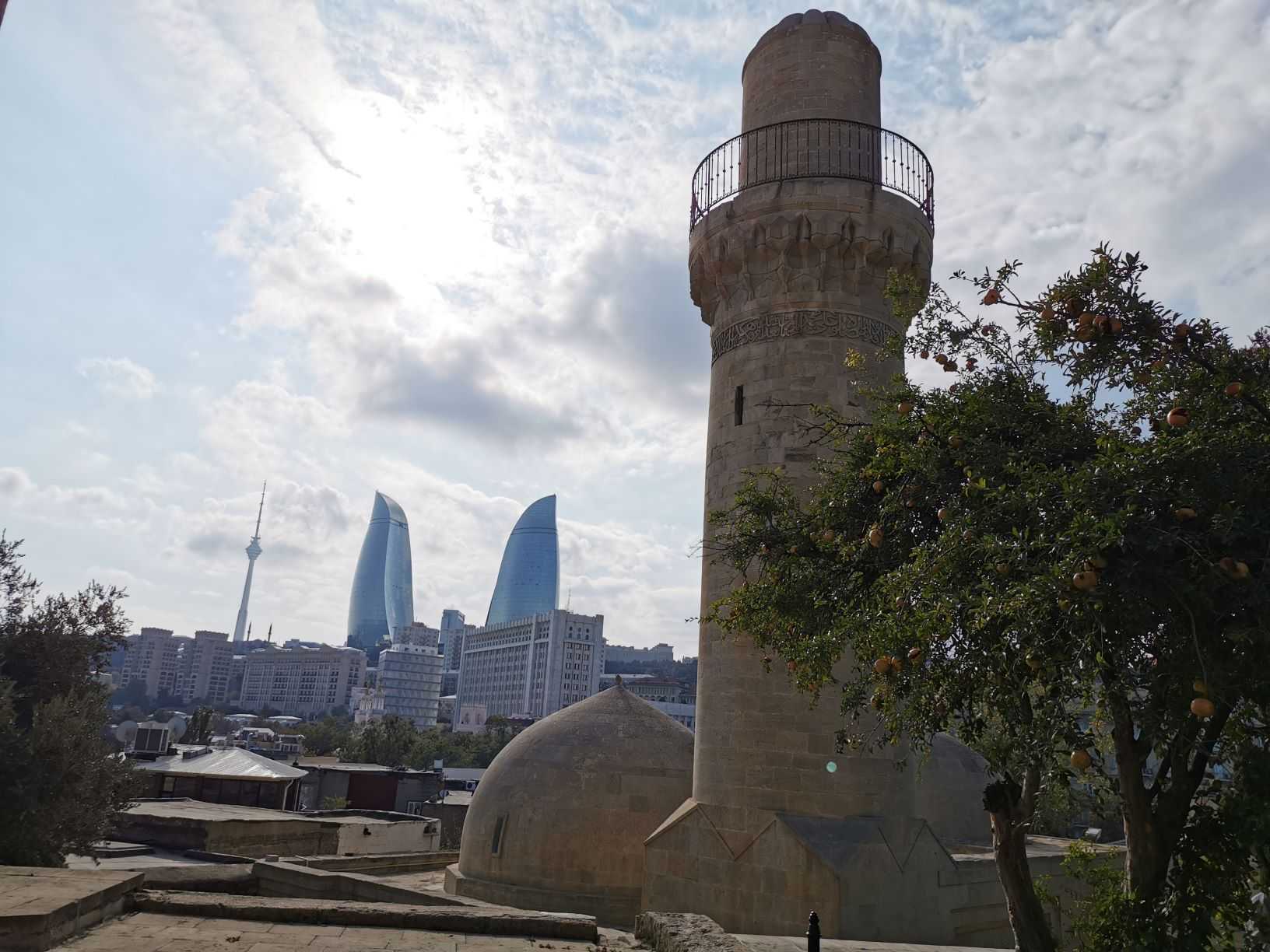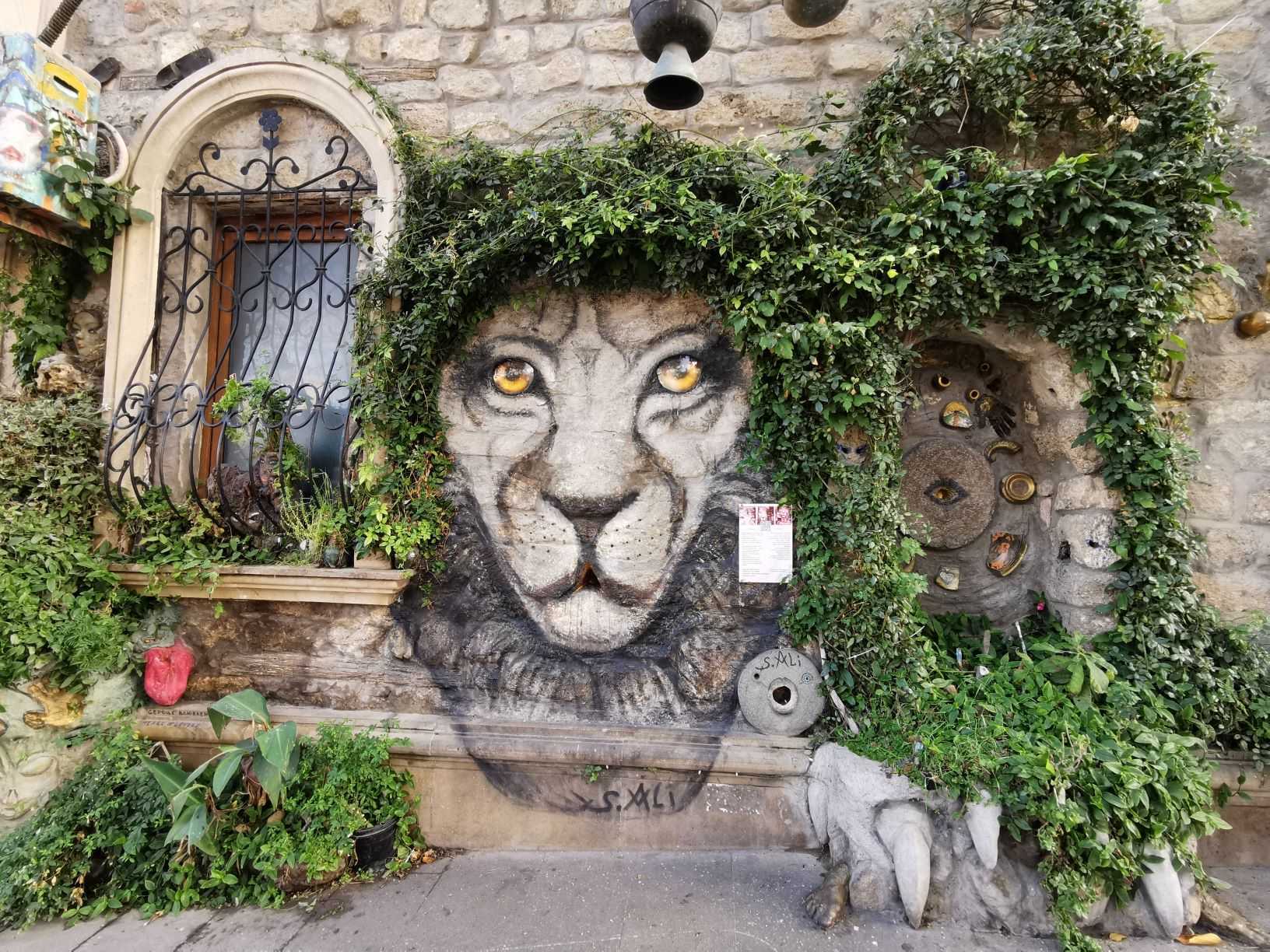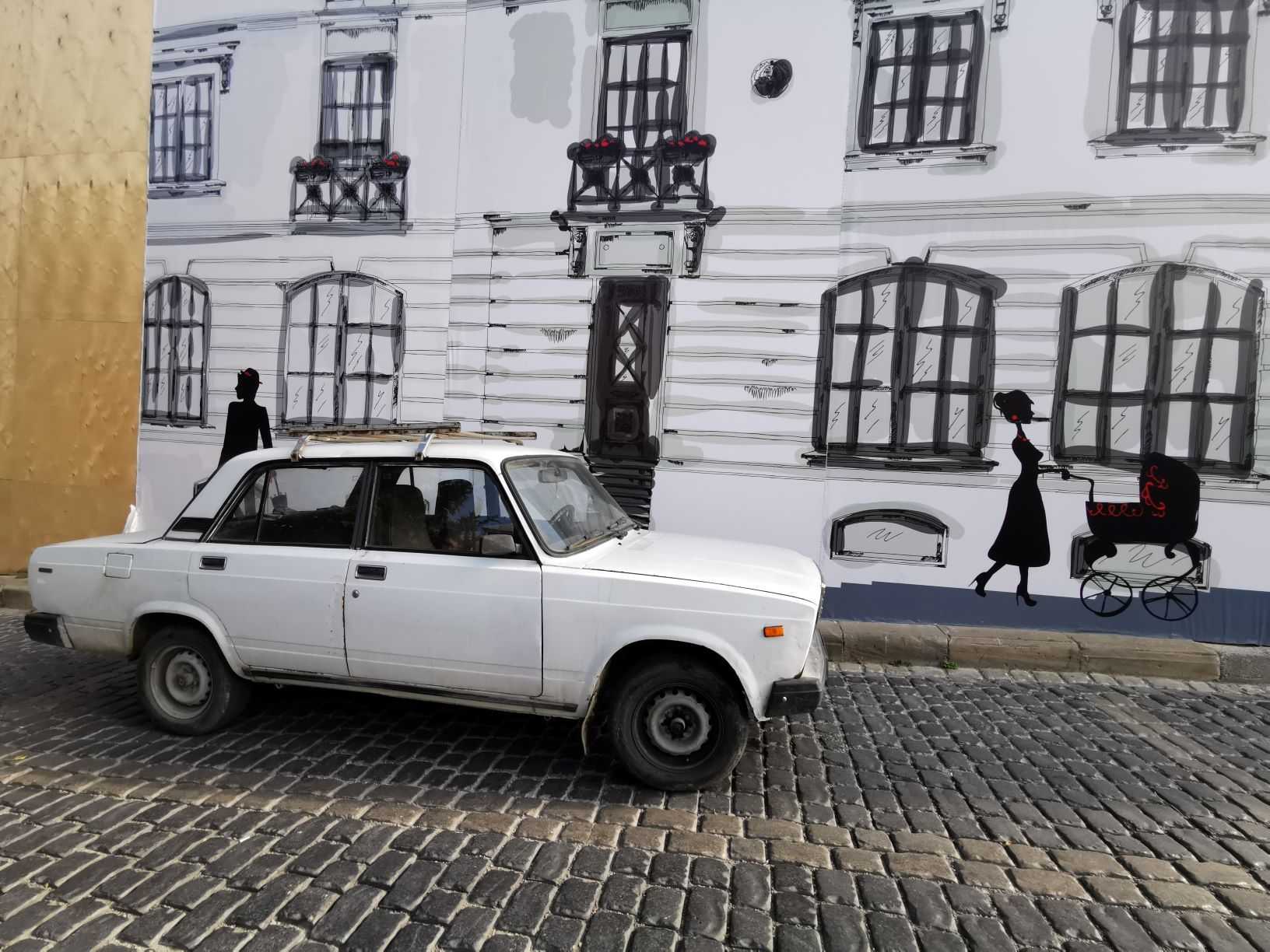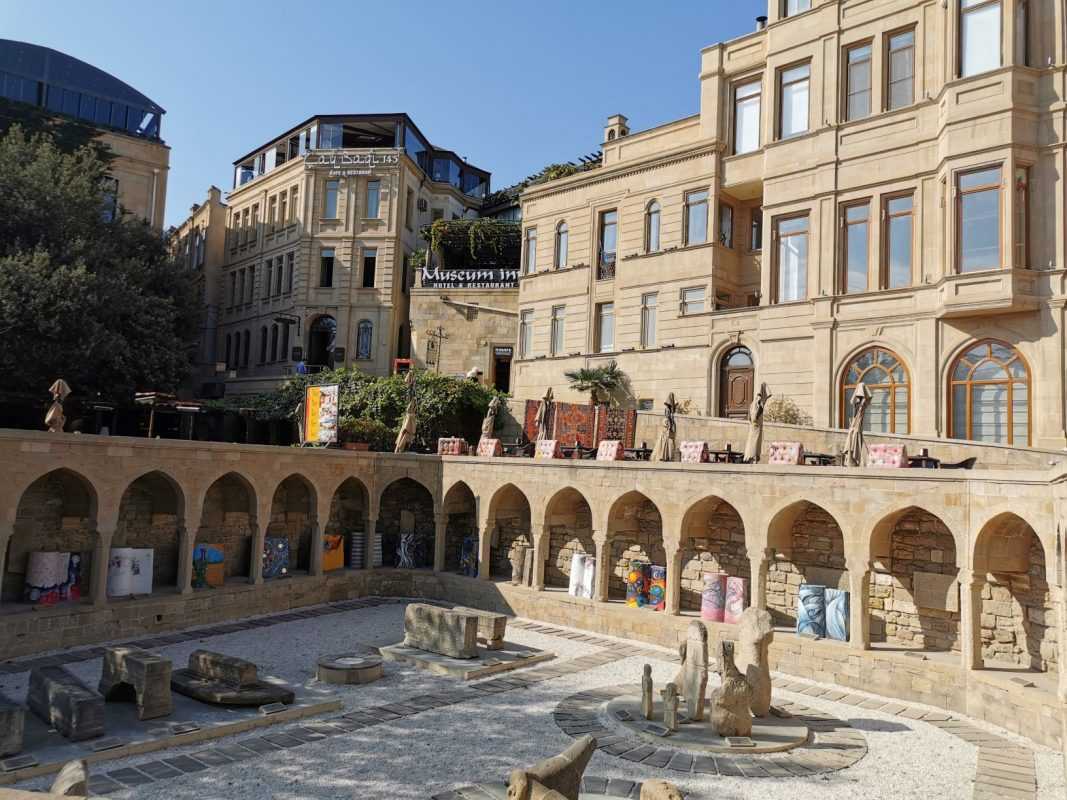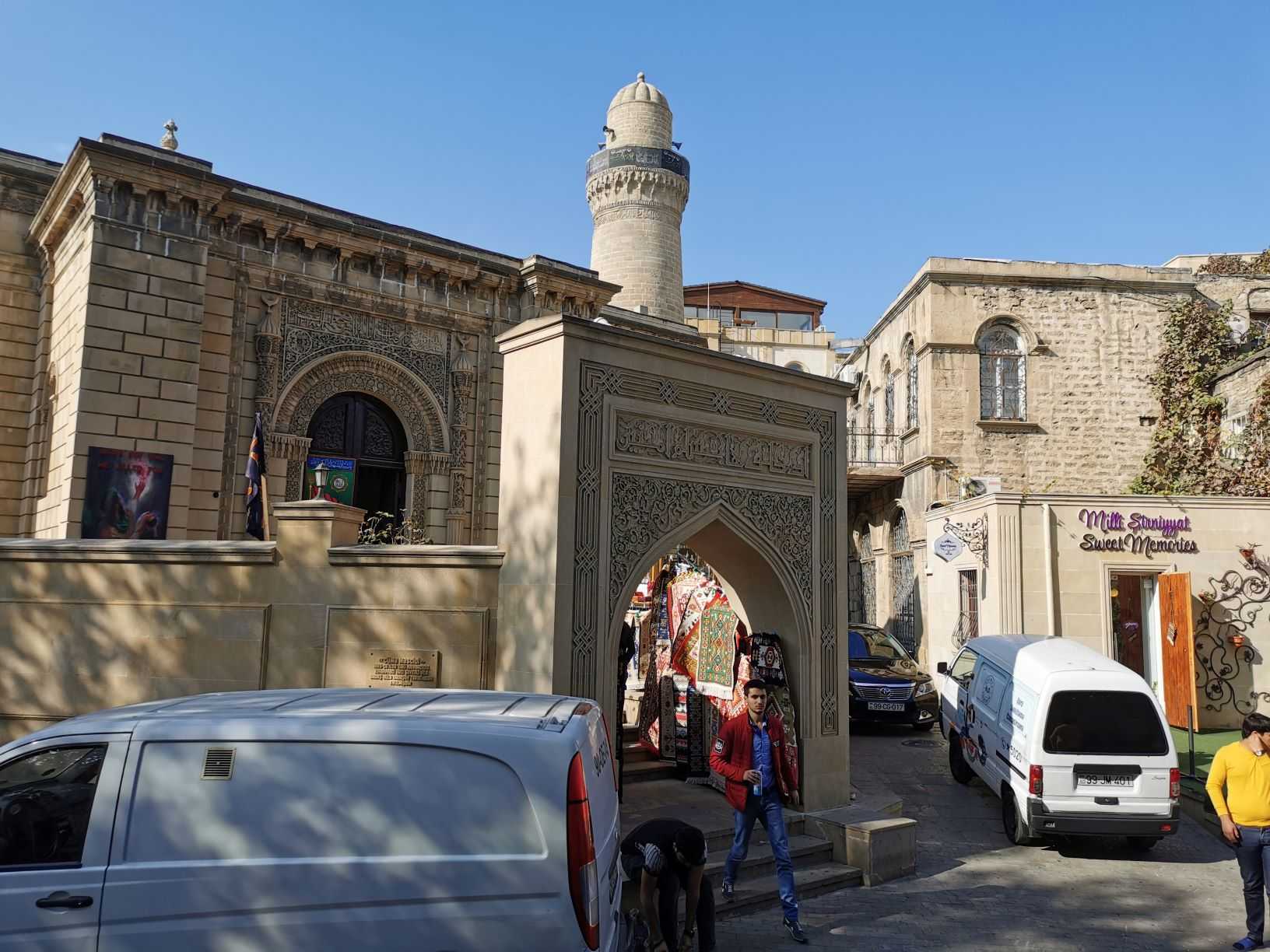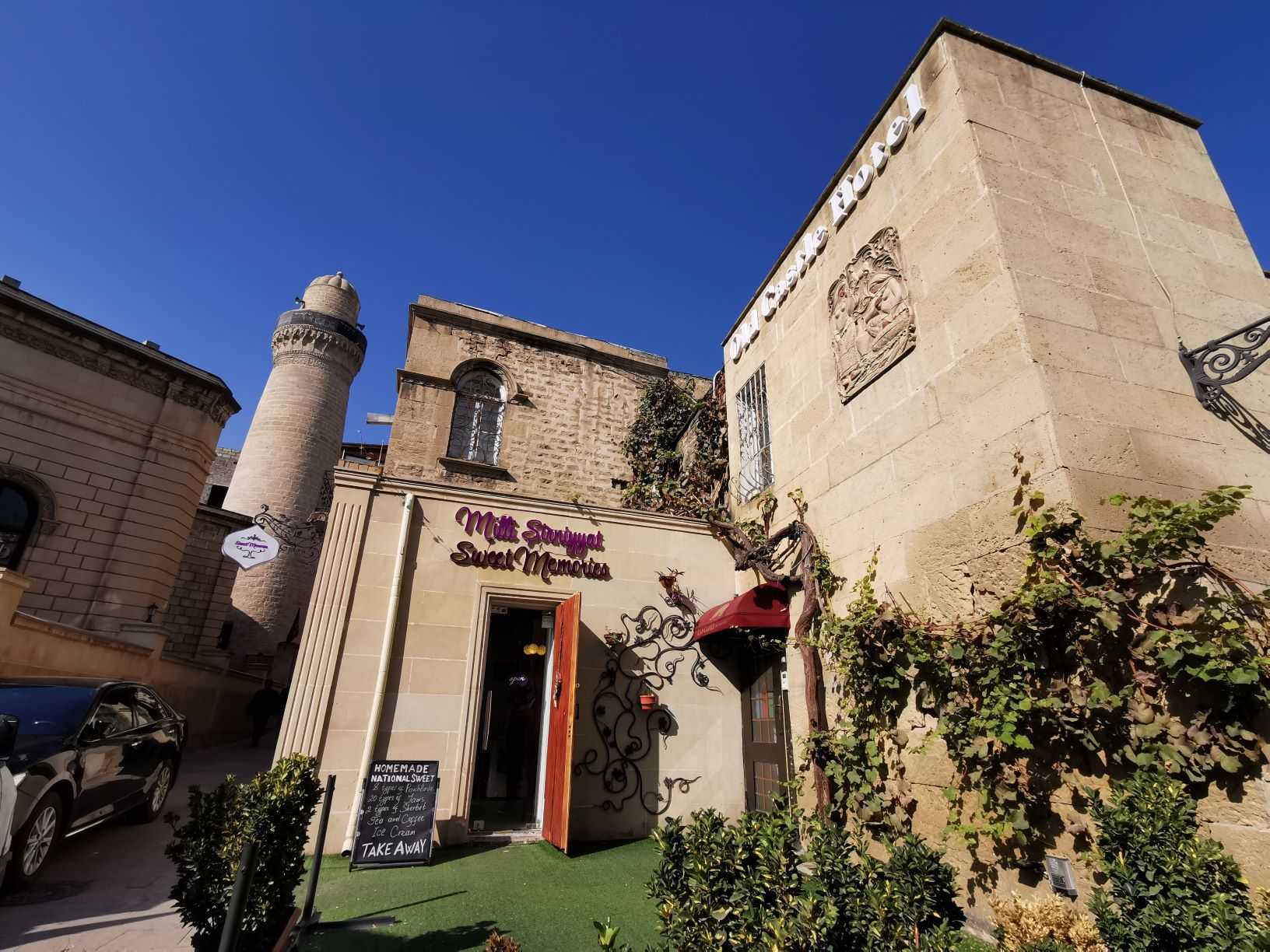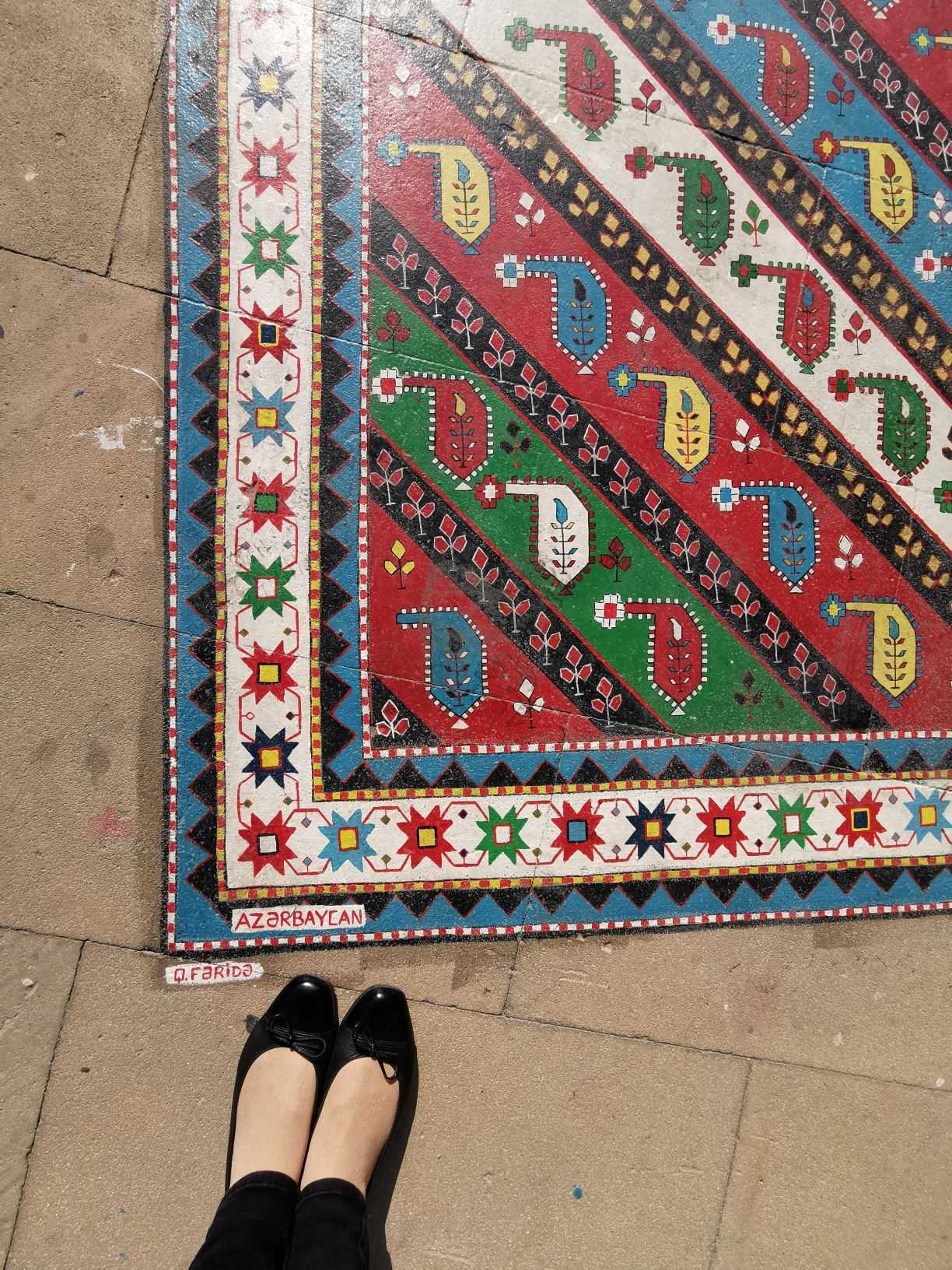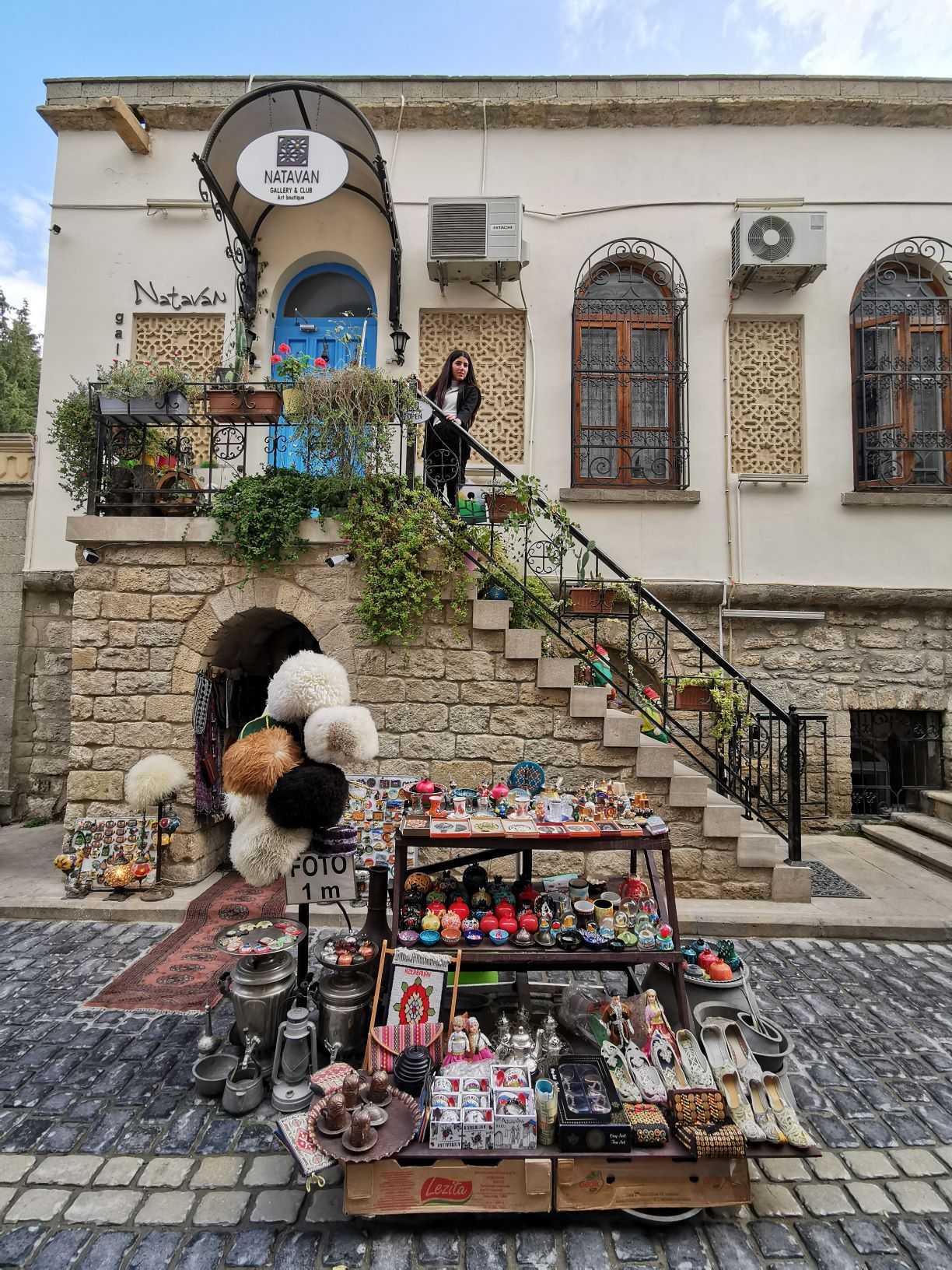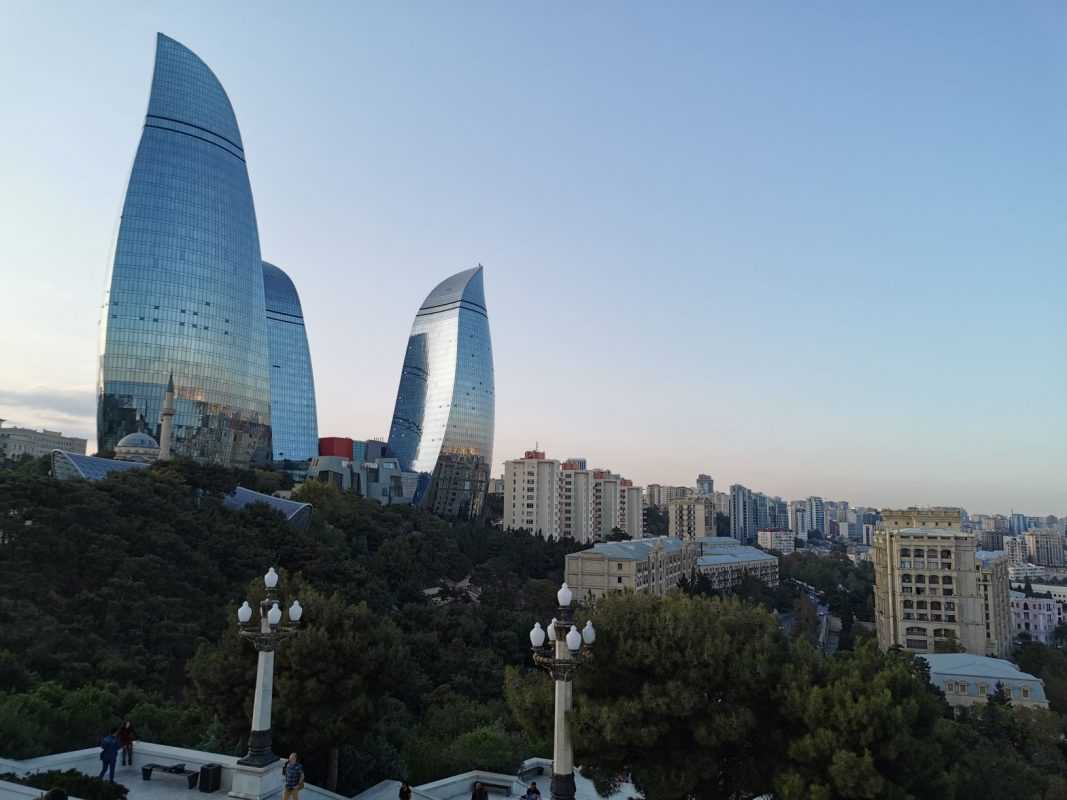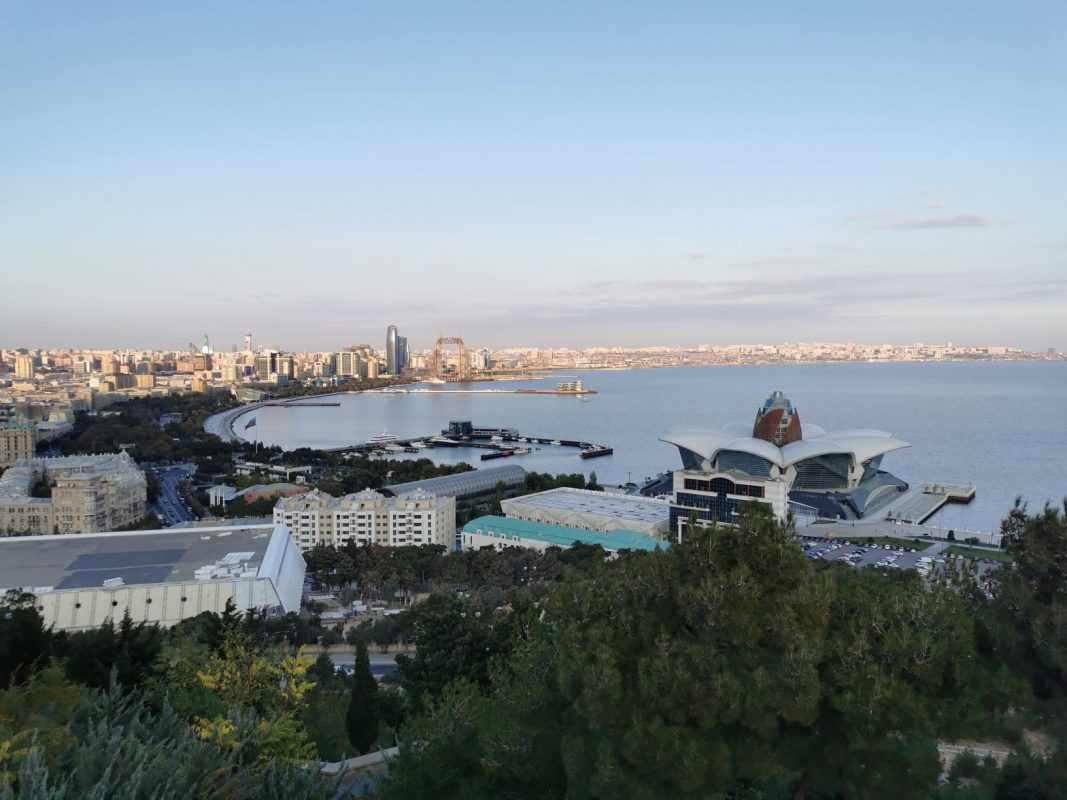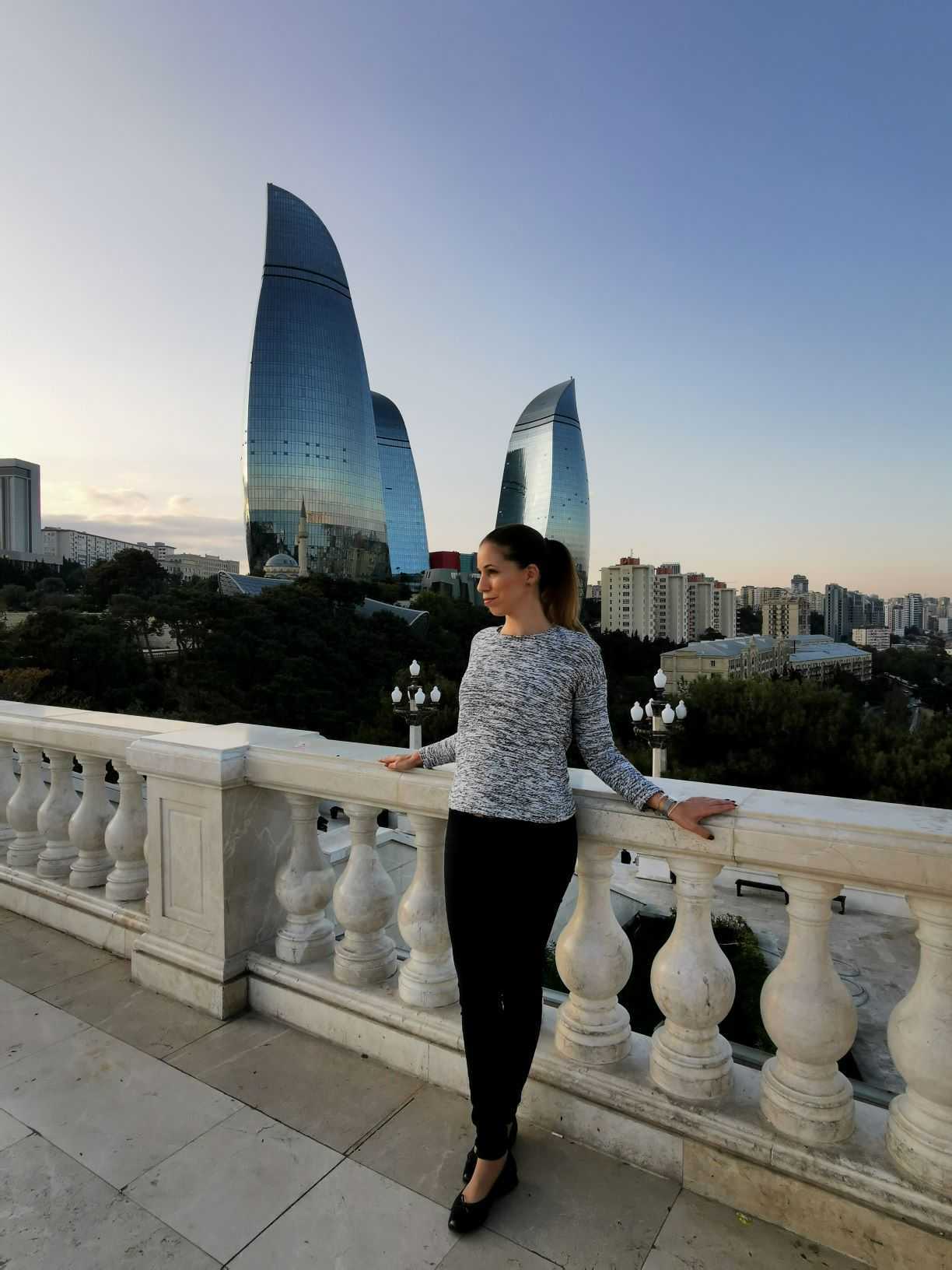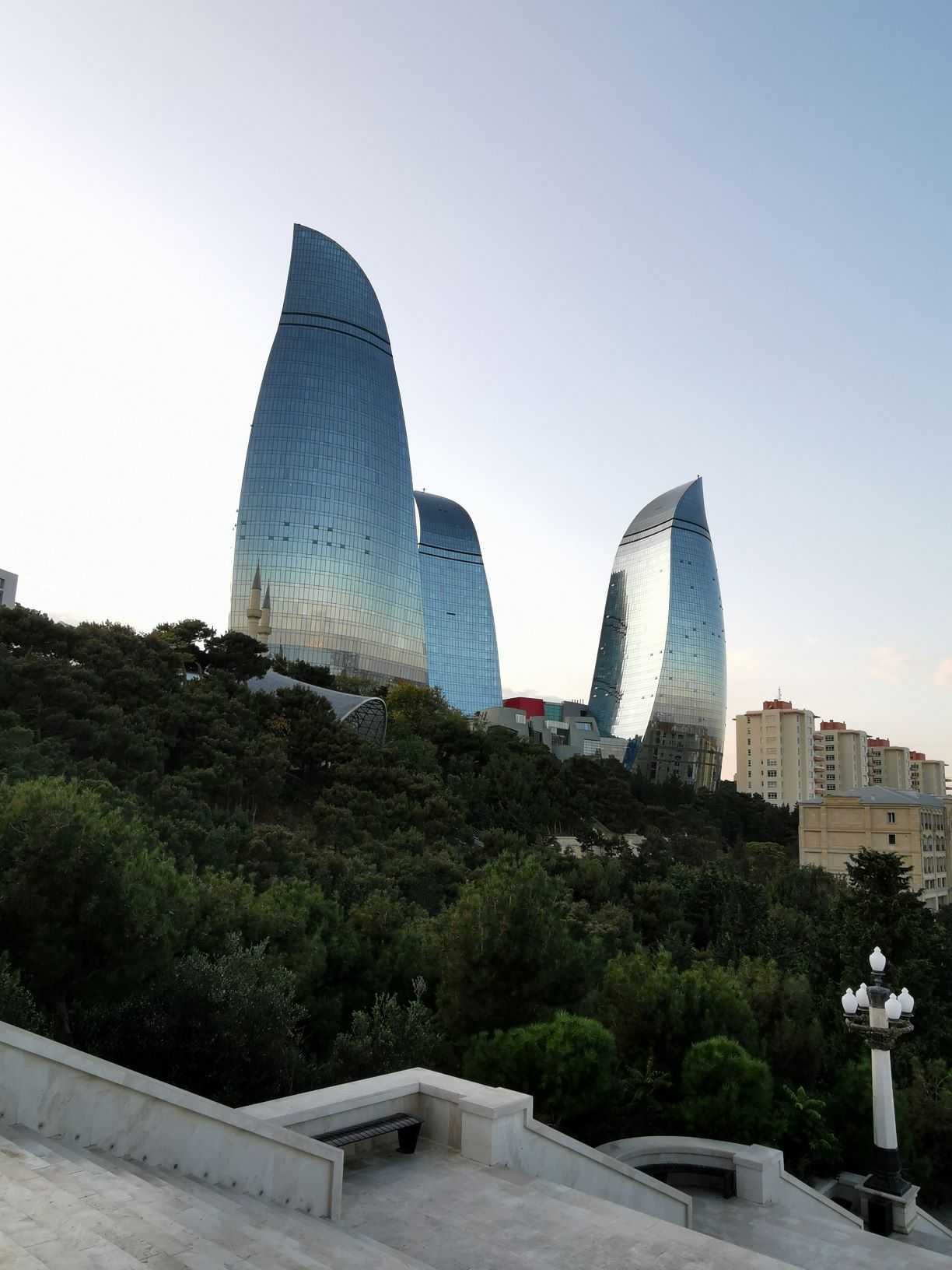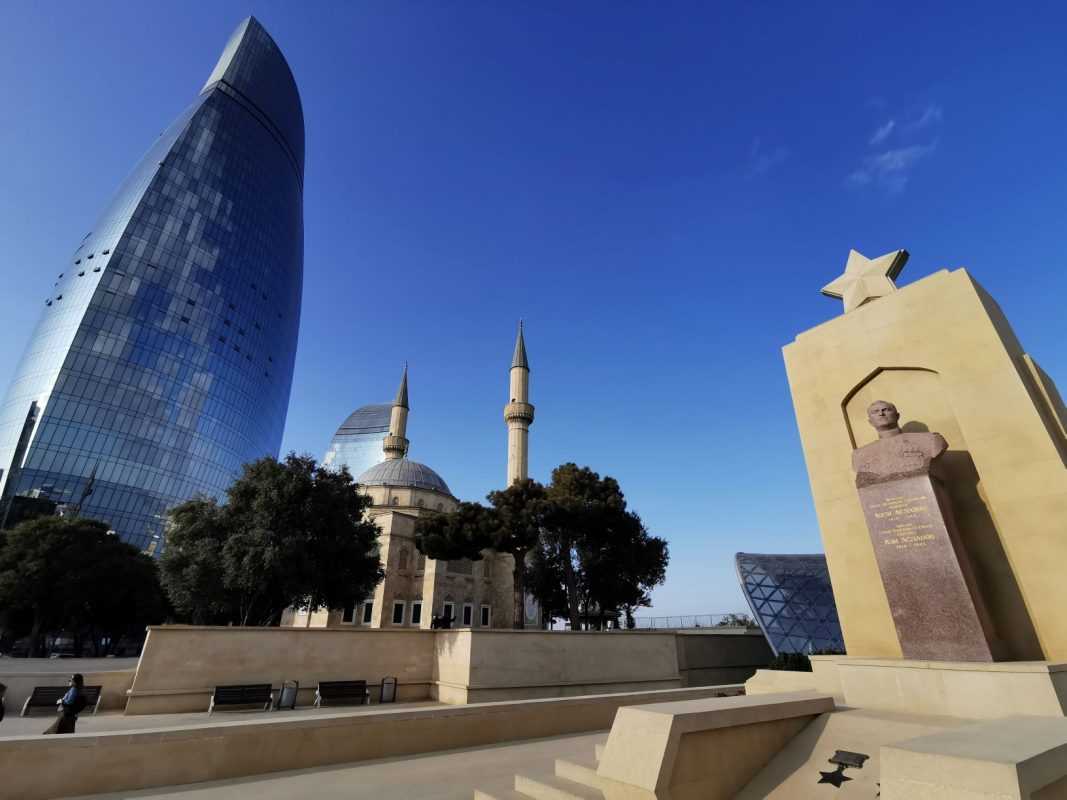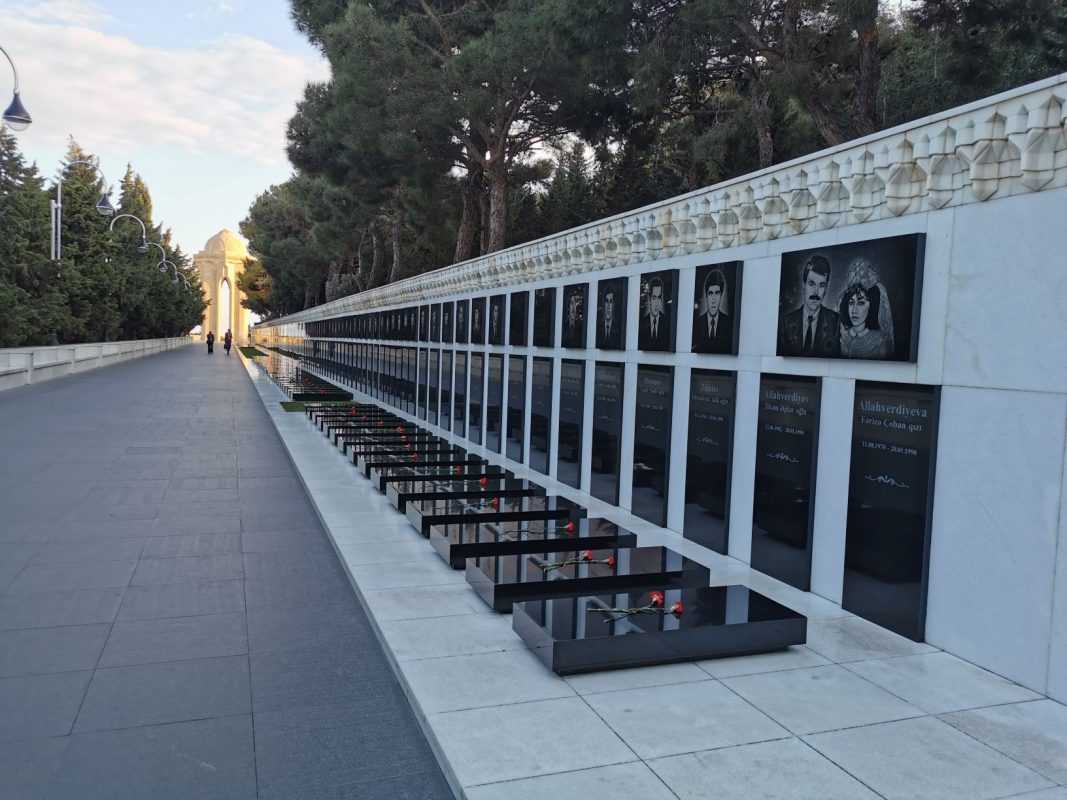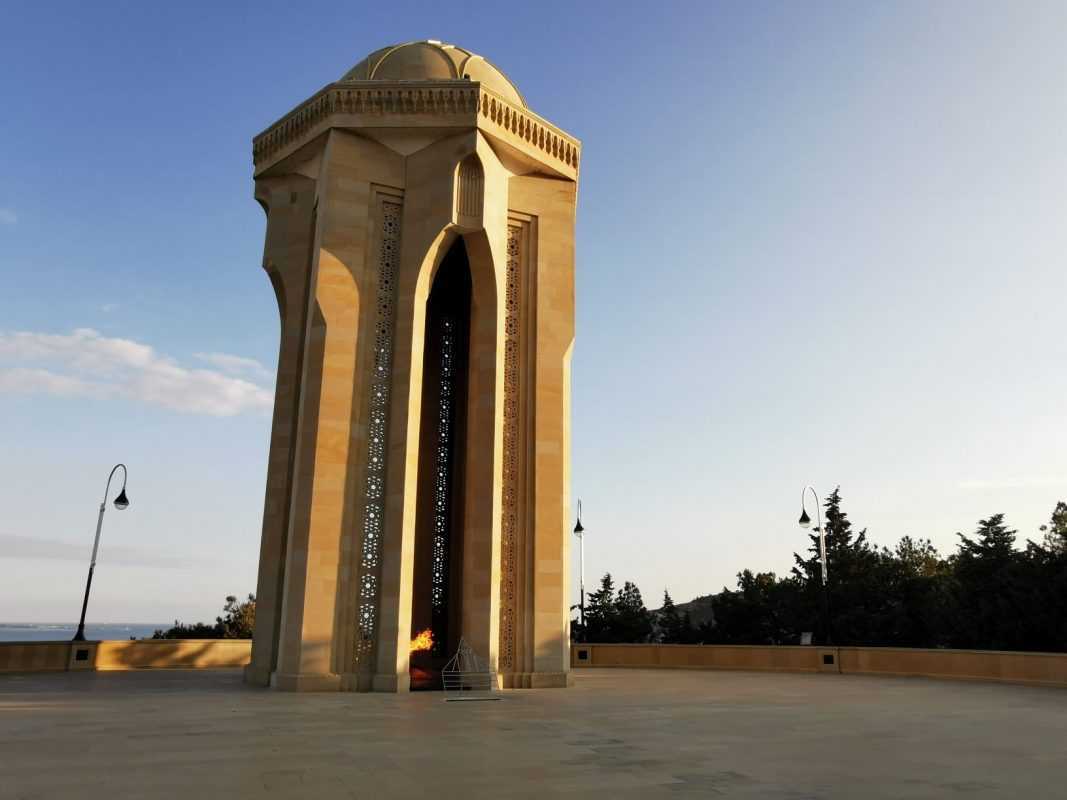For a long time, Azerbaijan was only visited by desperate travelers. Then, in 1999, James Bond, aka Pierce Brosnan, came along, and in the World is Not Enough he showed us the Azeri oil fields in the middle of the desert. This is not a very spectacular film scene in itself, but it tells a lot, as 95% of Azerbaijan’s GDP comes from oil and is the world’s top exporter of petroleum. It’s been 20 years since the movie, and the oil has changed everything. So much so that the country’s capital Baku, today contains only traces of the past and a greater share of the future. However, let’s not get ahead of the story. Let’s see how I got to Baku.
The Caucasus has long been on my imaginary bucket list: foreign cultures other than ours attract me like magnets. Although to be perfectly honest, Azerbaijan was not the number one destination, speaking of the Caucasus. Then I found a cheap Wizzair ticket, which I couldn’t resist, so I briefly moved my headquarters to the Azeri capital. Hungarian citizens can travel to the country by visa for a maximum period of 30 days, which must be requested electronically. I only managed to make it in a second run and it cost $24, because I mistyped a digit in my passport number and my application was denied. By the way, mistyping is my bogeyman at every flight and hotel reservation. Now that I’ve been through it I’m glad it only cost this amount. After a few hours of sleep, we arrived at the airport in the early hours of the morning, where the glistening-flashing futuristic terminal immediately knocked all dreams out of my eyes.
For some reason, I thought Baku is a less modern place, but this preconceived concept disappeared as soon as we got into the city, and one after the other skyscrapers and newer buildings sped away in front of our eyes. I felt a little like I was in Dubai (I wrote about this here), seeing the post-Soviet and Italian Renaissance-style buildings. In any case, during the first few hours of my stay there, it turned out that anyone who likes modern things will find their calculations in Baku.
But what do you know about this city with a population of more than two million? The name of the city derives from the ancient Persian word bad-kube, which can be translated roughly into howling winds. Fortunately, we didn’t perceive any of the wind, in fact. At the end of October, it was bright sunshine and 22 degrees, which, of course, could only be rejoiced, as it is much better to hike in good weather than in cold and pouring rain. Let’s just say while I’m at home at this time, I don’t even want to stick my nose out of the house while traveling, only a tornado and a tsunami can stop me because I’m constantly driven by the desire to explore.
Baku is the lowest capital in the world – 28 meters below sea level, ahead of Amsterdam – and the largest settlement in the Caspian Sea. Speaking of which, there are scientific debates about whether the Caspian Sea is actually the largest lake in the world, or if it is indeed a sea, but it is certainly salty. On the way to the city, the taxi slammed my nose with the unmistakable smell of oil, which I thought must be coming from the car. But no, the smell of oil comes from the air, thanks to the huge amount of oil wells around the city, which J.R. Ewing could envy too. And if we accidentally forget how important oil is in the country’s life, an oil rig monument (Saat qüllاsi) like the Eiffel Tower reminds us of it on the banks of the Caspian Sea.
However, not only the wells contain oil, but also the Caspian Sea, which draws water into all colors of the rainbow on its surface accompanied by a strong smell of oil. As tempting as it may seem to take a dip in the water on Baku Boulevard, let’s not do that. Unless you want a pampering oil treatment. However, the Naftalan sanatorium in Azerbaijan is more suitable for this, where various crude oil treatments are available and promise healing from rheumatism to eczema. The wealth has not only a price but also a smell in Baku.
In 2006, the second oil bloom happened to the country, thanks to which virtually all of Baku was completely rebuilt. From every corner of the world, there’s an iconic place or building, a little reinterpreted, or in a slightly different form. But at least it’s theirs.
For example, there is mini Venice on the Caspian coast, which will not sink even though it lies below sea level. The snow-white marble canal with sky-blue water and cafes is undoubtedly an eye-catching place, and the only icing on the cake is that the boat ride cost for about 800 HUF. Since I missed this kind of fun in the real Venice, here in Baku, I made up for the gondola at a fraction of the original price.
The city also features the London Eye Ferris wheel in scaled-down form and a doppelganger of the Sydney Opera House, which is now being built and will be a waterfront shopping center in Baku. Located across the street from the lotus flower-like building, we can find one of the most interesting buildings in Baku, the twisted, flower-patterned carpet, which is actually nothing more than a museum. From the Bronze Age through the Middle Ages to the present day, more than 10,000 exhibits await you here in the minds of 7 AZN (about 1100 HUF).
The city’s main attractions are mostly within walking distance. It is enough to start on the shores of the Caspian Sea or on the boulevard. Or on the 4-lane asphalt road, which is also the home to Baku Formula 1, where the pit lane buildings show the places of each garage all year round. Behind the pit stop, there is the governor’s building. Well, there’s never a worse Paddock Club than this one. Speaking of F1, I’ve worked in this field for four years as a sponsorship expert, so I feel always nostalgic when I’m on a Formula 1 track. Although this time a 60-speed alert was placed by the side of the road, it did not stop the speeding cars. I say from experience that most Azerbaijani drivers really think they are F1 pilots and not only on the asphalt but on the 2-3000 meters of mountain roads too!
After the speeding excitement, it is worth detouring to Sahil Park, where you can admire wonderful fountains and a soothing ensemble of water jets. Or you can lick an unadulterated flavor of retro ice cream Not like I tried to do at the Hilton Hotel’s modern building, even though I had fun.
The Heydar Aliyev Cultural Center is like in the movie Back to the Future. The robust building is the most beautiful around 11 am in sunny weather when you can look at the sun, but not the blinding white marble. The building showed itself to us at sunset when the curves and glass windows of the building were still beautiful in the rays of the sun. This place is a paradise for minimalist-futurist photographers since there are no two angles from which the building is the same.
In the square in front of the cultural center, it is nice to relax on the grass. This place is a little far from the center of Baku if you come here on foot. But it should not be missed, because, in addition to being one of Baku’s main symbols, it is also the legacy of the renowned Iraqi designer Zaha Hadid. Her impressive buildings can be seen around the world, from Abu Dhabi to Singapore to Dubai. She was the first woman in the world to receive the prestigious Pritzker Prize, the equivalent of the Nobel Prize in architecture.
By the way, speaking of Nobel, did you know that the Nobel family who later founded the prize owes its wealth to Azerbaijan? They founded their future by drilling Azeri oil wells and their house, Villa Petrolea, built in the 19th century, can still be visited. After so many cultural detours, let’s dig into Baku’s past, because fortunately, in addition to modern buildings, there is also a tiny old part of the city. True, tightly surrounded by a 12th-century stone wall, so that modernity doesn’t get in there. The most beautiful sights in the old town are the Maiden, the Virgin Tower and the Palace of Shirvanshah, which, by their historical and cultural importance, are UNESCO World Heritage Sites.
The Maiden Tower is an important symbol of Baku, which can be seen also on official papers and on banknotes. The tower was originally raised in the 12th century for the purpose of a watchtower and observation, but its foundations date back to the 6th and 7th centuries. Today, the tower is also a visitor center and a museum offering fantastic views of the city and the Caspian Sea from the top for 10 AZN. At the base, many souvenir vendors have set foot, where you can choose from beautiful carpets, but antiques can also be bought here.
Another important attraction of Baku’s old town is the Palace of the Shirvanshah, which is practically a building complex with the mausoleum of Seyid Yahya Bakuvi, the Key-Kubad Mosque and a hammam. The palace was built in the 15th century and, beyond being the seat of the rulers for a long time, is a gem of Azerbaijani architecture. It’s difficult to take a nice photo of the building because over time many buildings have been erected around it, but standing in its yard and looking out at the city of Baku really feels special.
Take a few hours to Baku’s old town. Let’s take a long walk among the medieval buildings hidden in the narrow, cobbled little streets, where street artworks emerge here and there, or the embassy of Magyaristan, since they know our country by that name.
Or let us turn to one of the caravans, which in the Middle Ages served as a resting place for silk road and merchants and served as inns. There is also a nice mosque within the walls of the old town, where women are not allowed in, even though according to hints it has a very nice interior decoration.
Among many other sights in Baku (e.g. Tezer Pir Mosque, National Flag Square, Fountain Square, Bibi-Heybat Mosque, or Richard Sorge Monument), I deliberately left the most important and spectacular to the end. The Flame Towers dominate the entire skyline of Baku and illustrate the city’s characteristics, which stems from modernity and the guarding of traditions. The three skyrocketing towers are the result of serious engineering and design work, so much so that the Discovery Channel has dedicated a separate show to them. There are apartments in one tower, a luxury hotel can be found in the other and there are offices in the third.
The construction of the towers has consumed a huge sum of more than $350 million and faithfully reflects the city’s relationship with megalomania. I put the stereotypes aside but most oil-rich cities have the right to have huge and astounding buildings. And, of course, you can’t forget the competitive spirit, who has the bigger… tower. About 40 km from Baku, the Azerbaijan Tower is under construction, which is scheduled to be 1,050 meters high. It will be the world’s tallest building, 220 meters taller than Dubai’s Burj Khalifa, while 50 meters taller than The Kingdom Tower in Saudi Arabia.
Returning to the Flame Towers, they can hardly be accused of modest looks, but their meaning and ideals are based on the oldest Azeritraditions. They have a flame shape for a reason. Zoroastrianism believers once lived in Azerbaijan and Iran, which is the oldest monotheistic and still existing religion in the world. Zoroastrians paid special attention to fire as the glory and shine of the world. In their fire temples, they paid constant tribute to this respect by burning the sacred fire and showing sacrifice in front of the firecracker representing Ahura-Mazdah. The world often called representatives of the religion fire lovers, so Azerbaijan became a land of fire in addition to oil.
The three flame towers that never sleep out are meant to symbolize this ancient sacred religion and respect wrapped in modern robes. Speaking of religion, today 96.9% of Azerbaijan’s population is Muslim, including the Shiite trend of Islam. But this does not appear in outfits (understand: most women wear completely European clothes) or in rituals in everyday life. They say that religion does not play an important role in the life of the Azeri, as they have been converted three times. But Zoroastrian roots and traditions have never ceased.
Walking around Flame Towers, let’s not forget the burning flame at the end of the Martyrs’ Promenade, which commemorates the victims of the War for Nagorno-Karabakh (1988-94). The carefully manicured graves are reminiscent of the Azeri-Armenian conflict that has existed to this day and is serious enough. The question of whether I was at Nagorno-Karabakh is also raised in the visa application. My suggestion is not to mention the Nagorno-Karabakh issue when you are in any country.
Azerbaijan’s capital is worth visiting if you are in the country as a tourist. At the same time, there is a life outside Baku and its gleaming buildings, and indeed. In my next blog post, I will guide you to the rural areas of Azerbaijan and the land of fire, where there will be no shortage of human stories, and cultural and historical traditions are also guaranteed.


